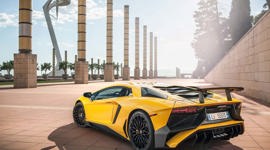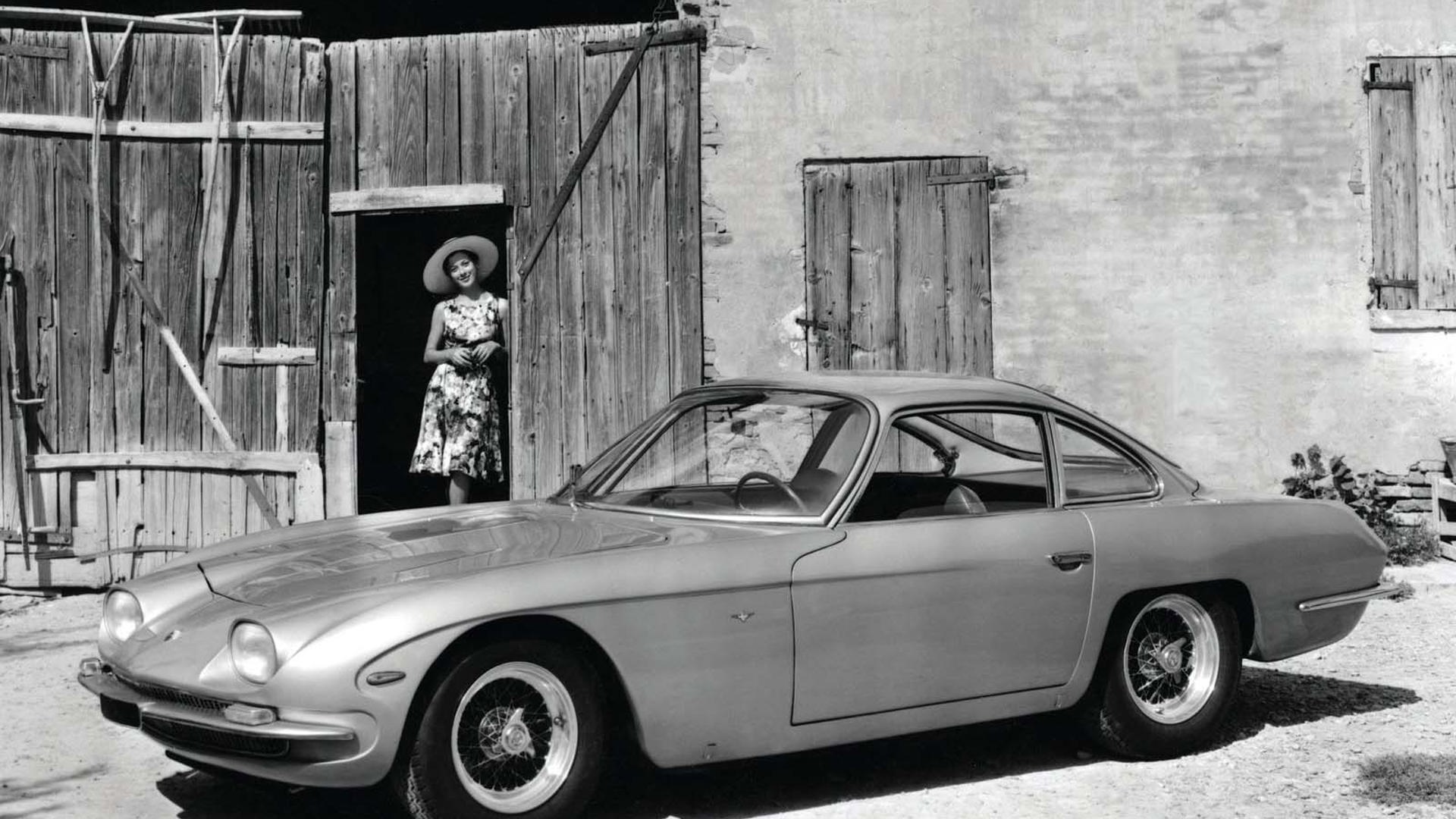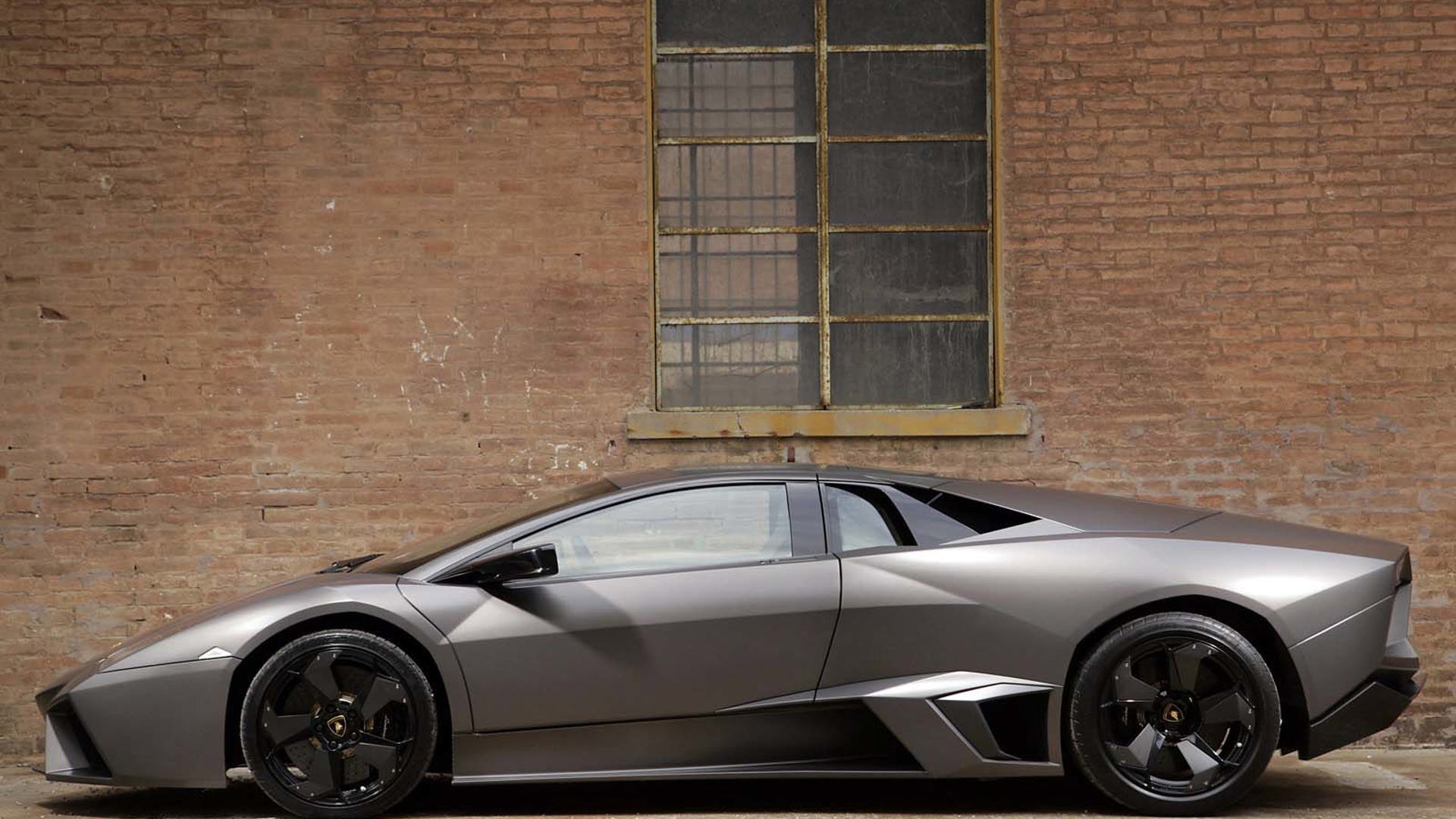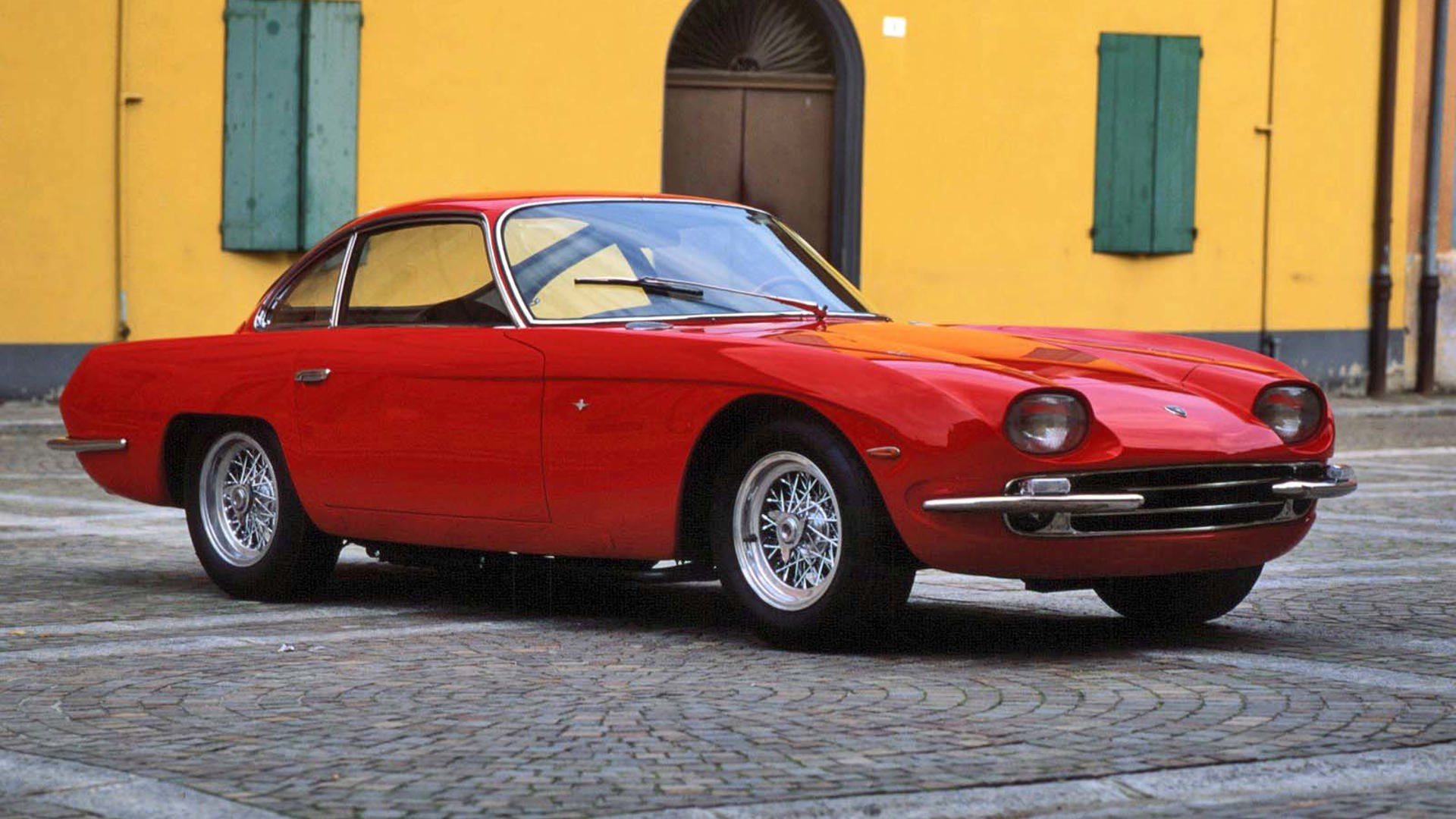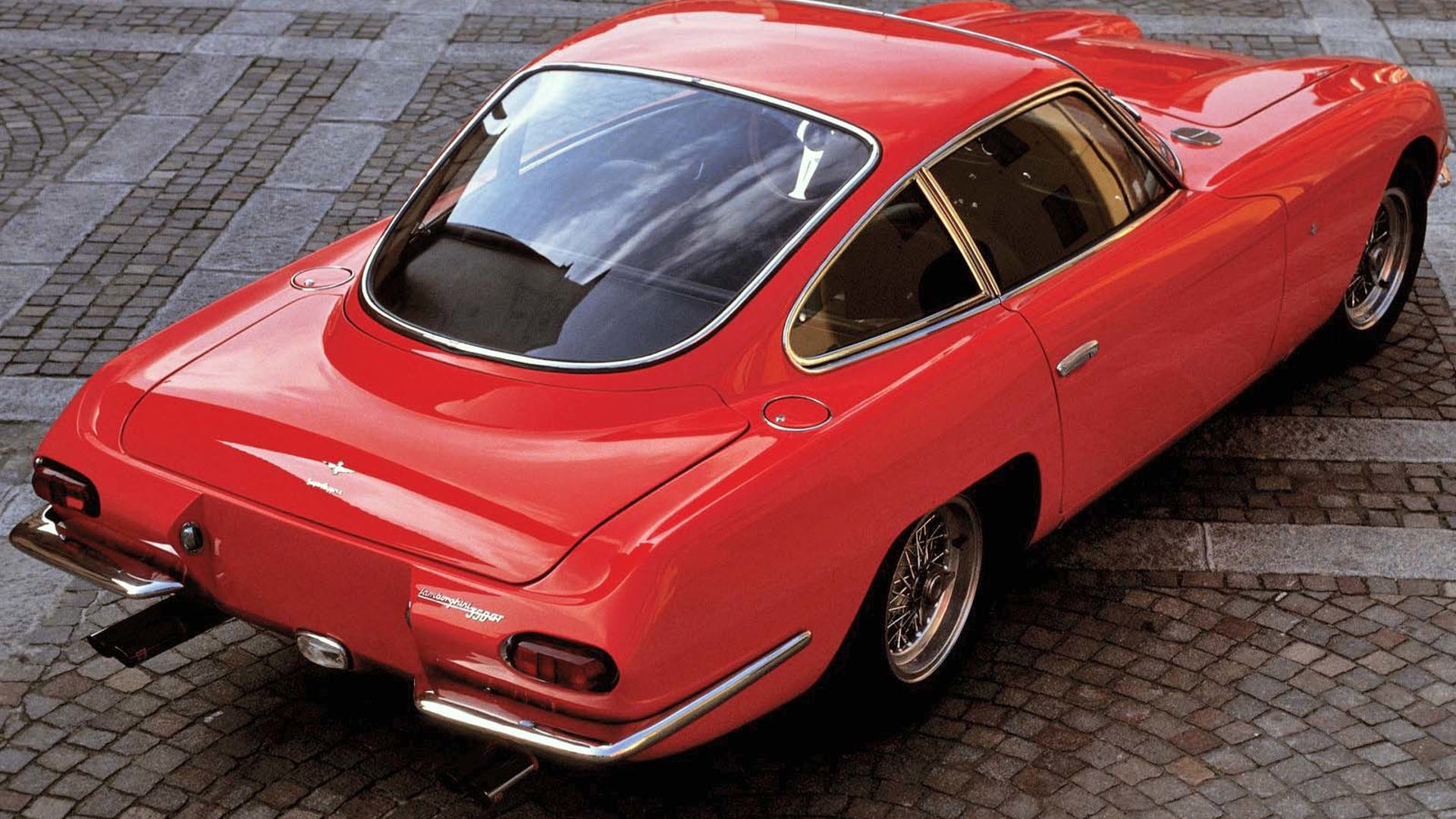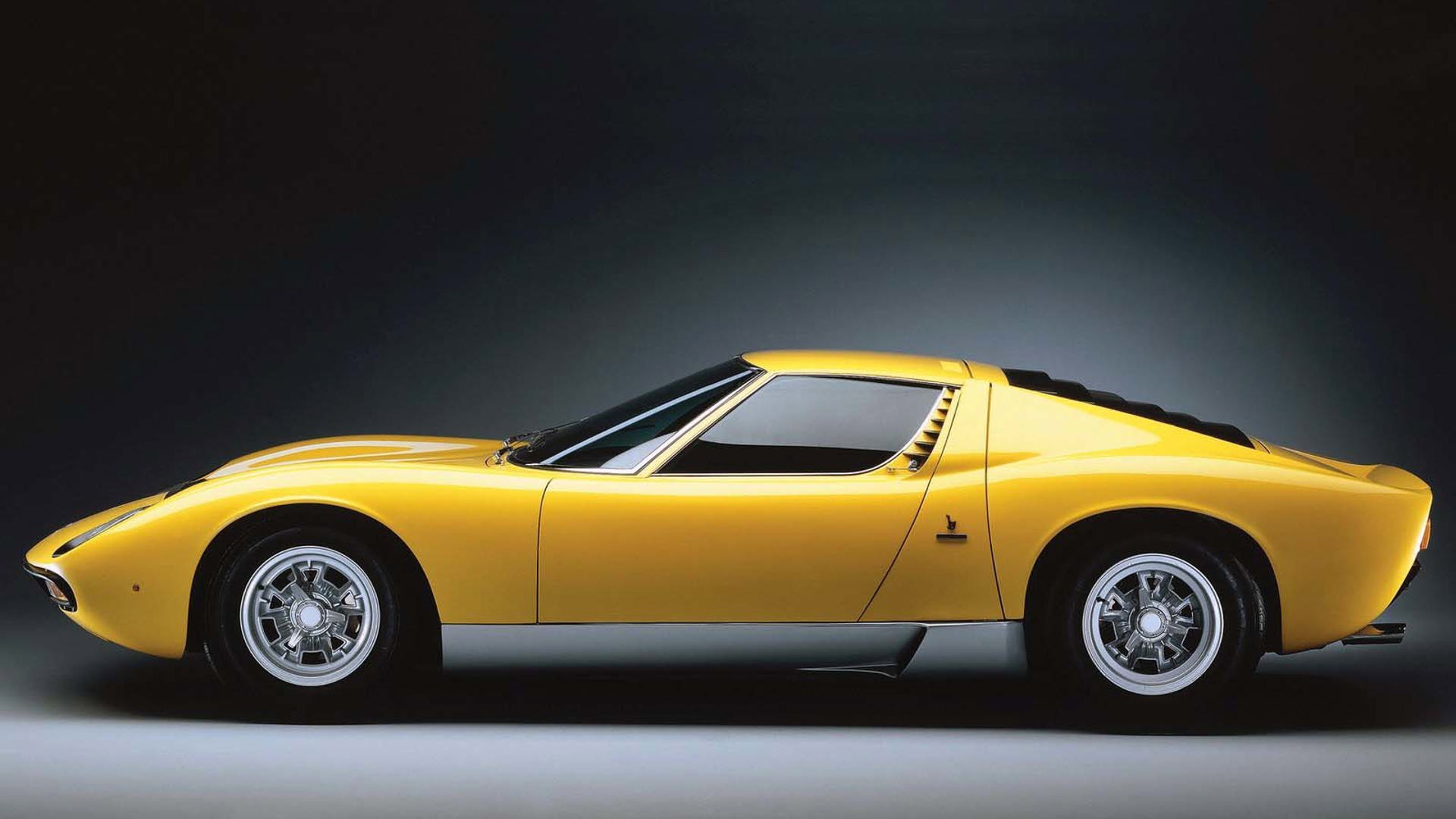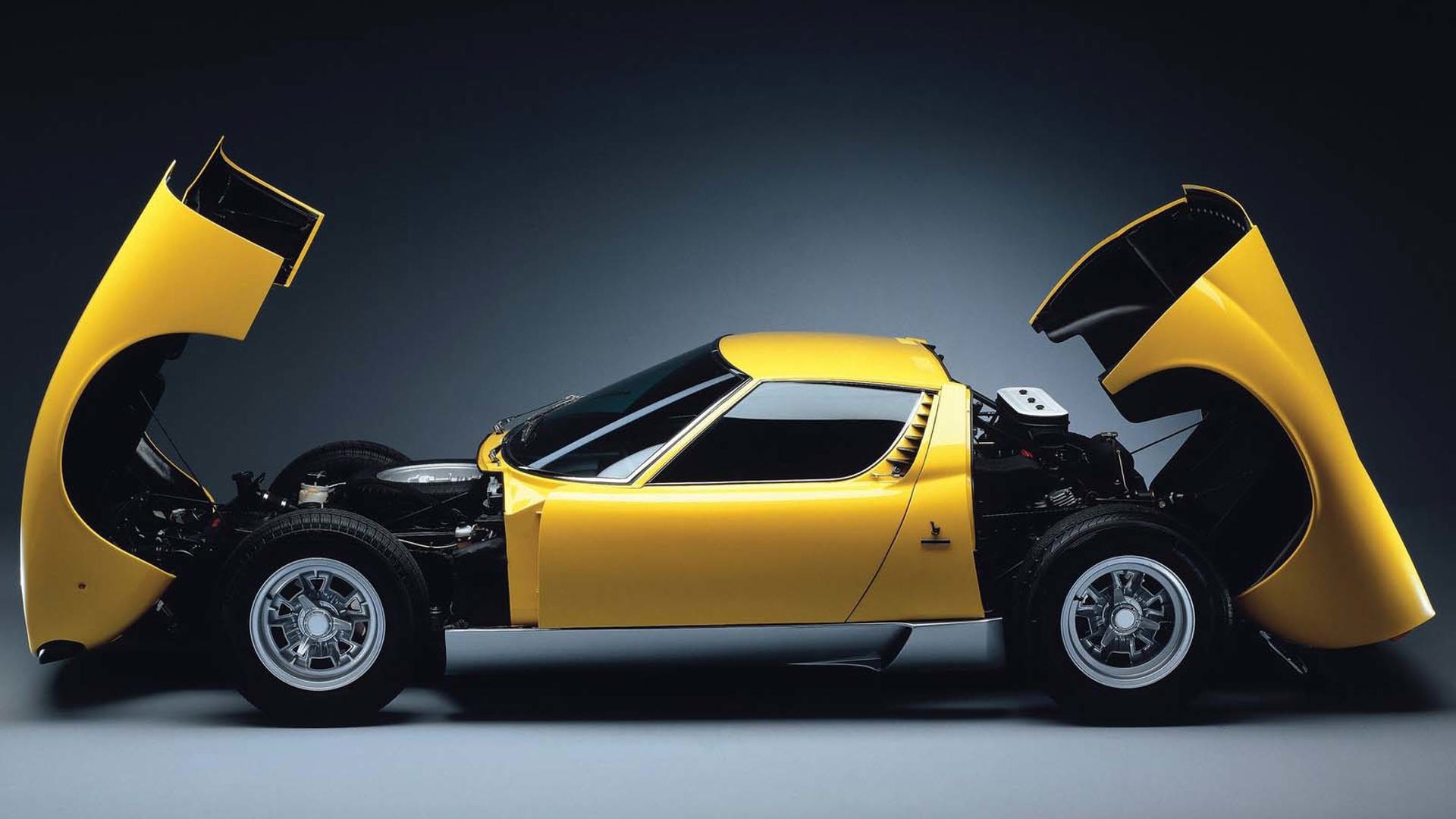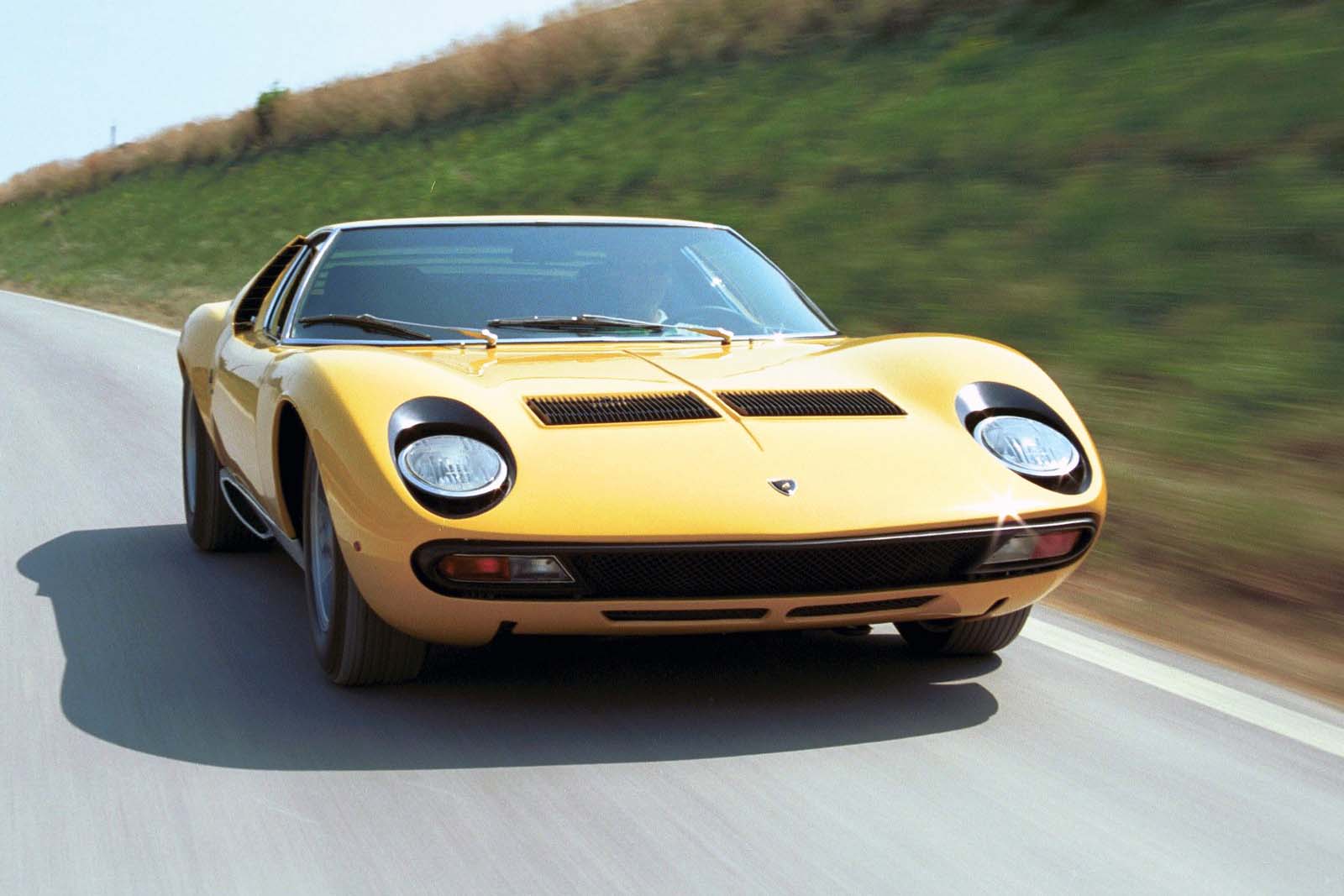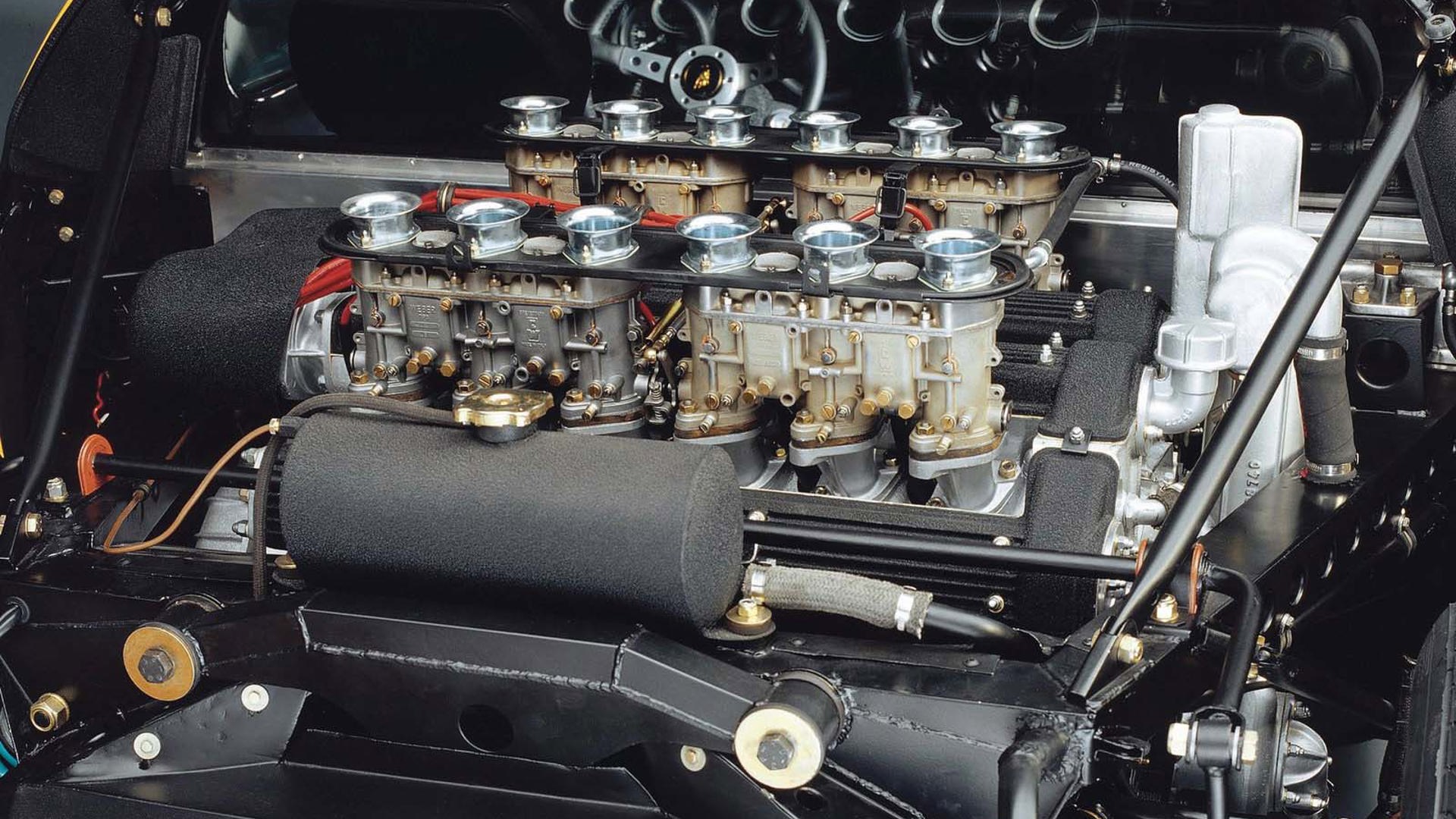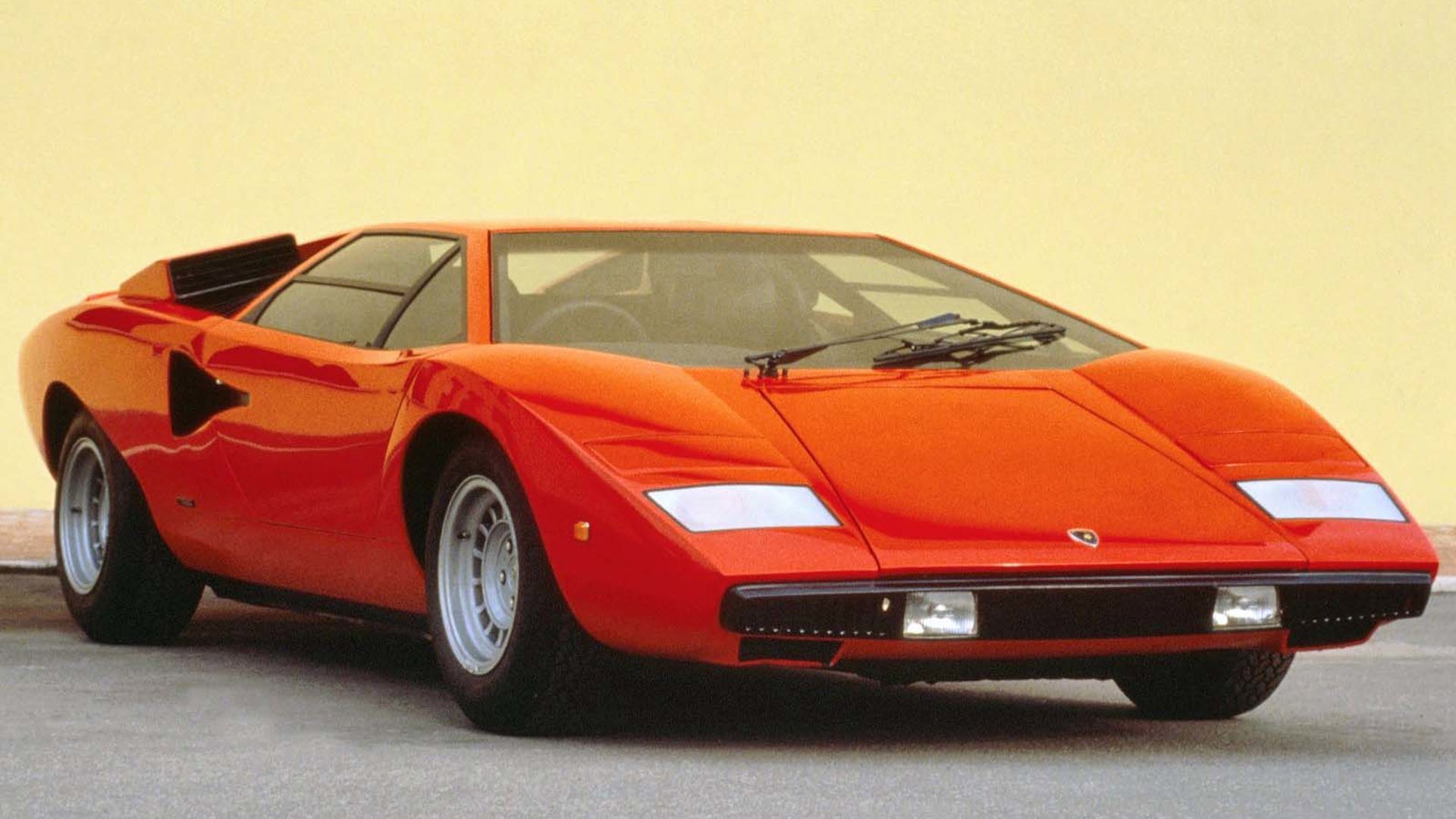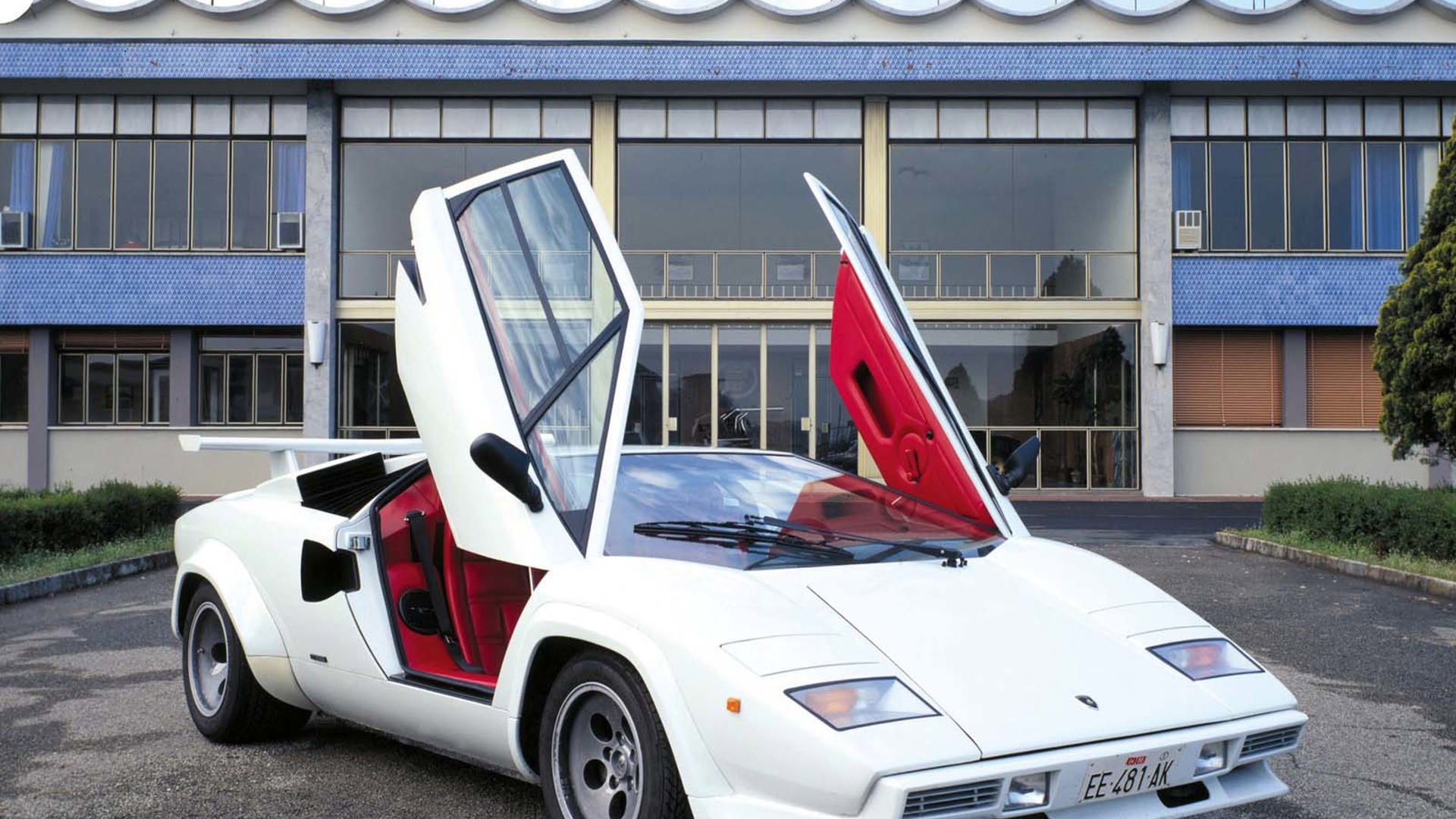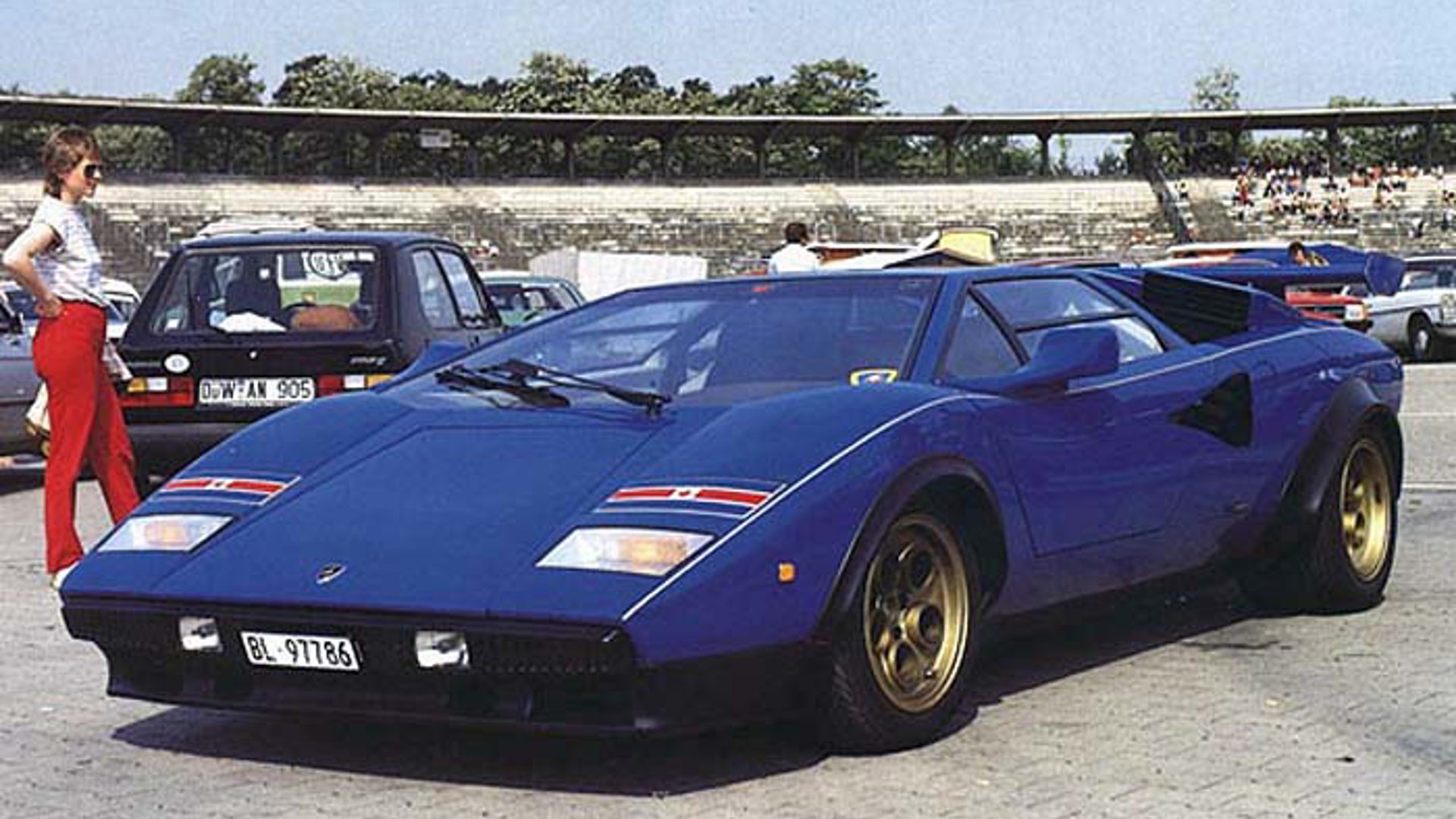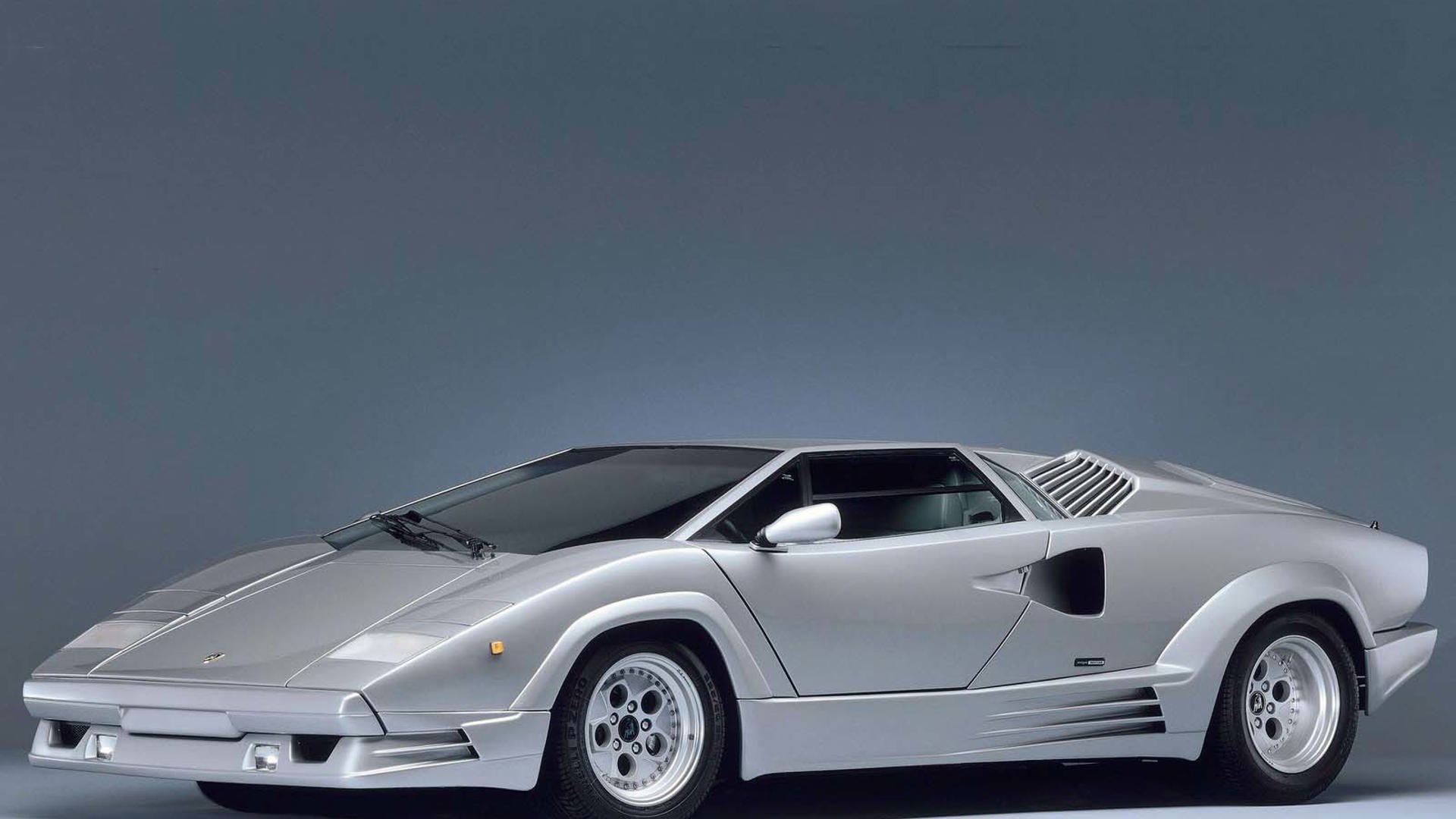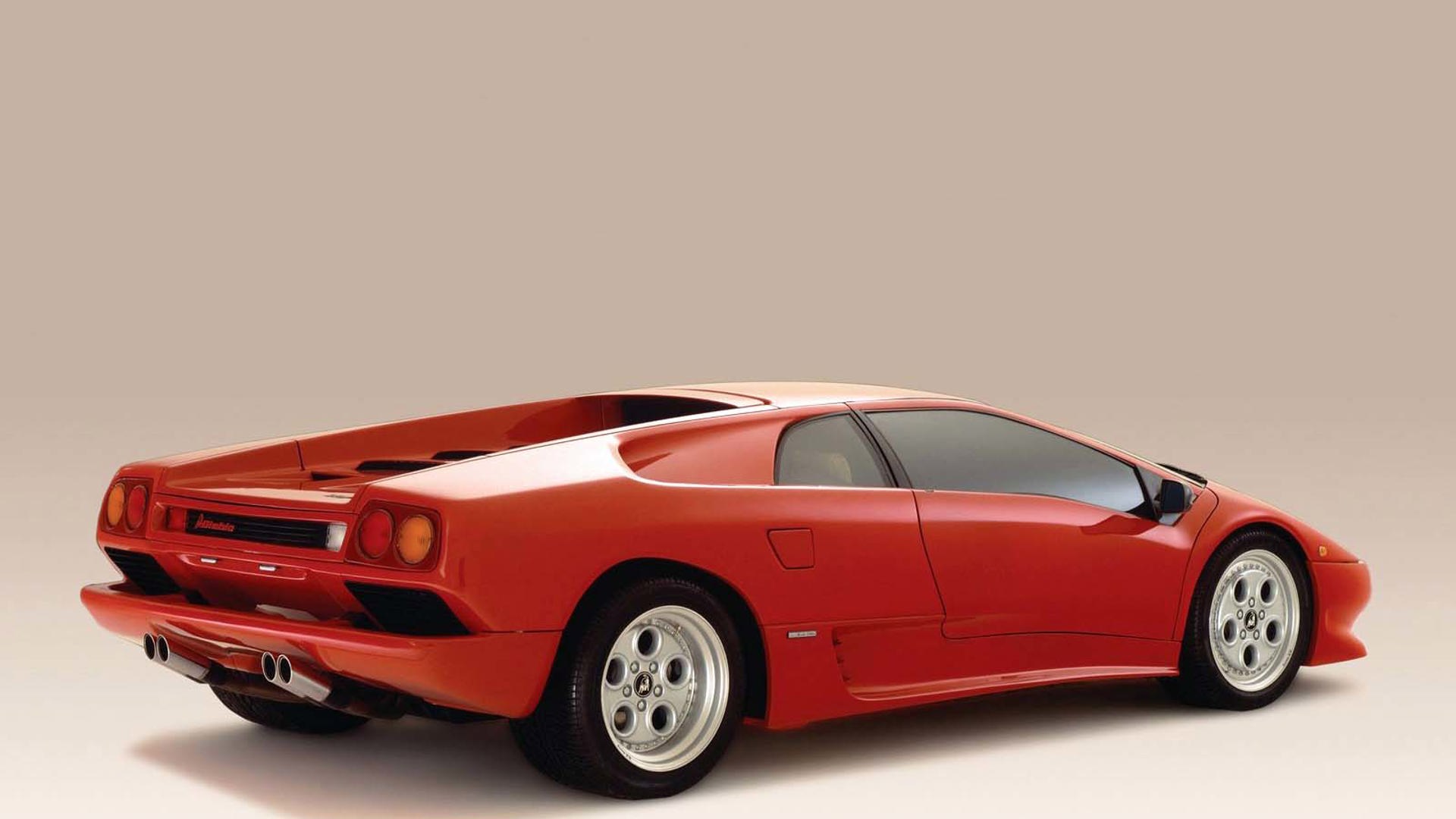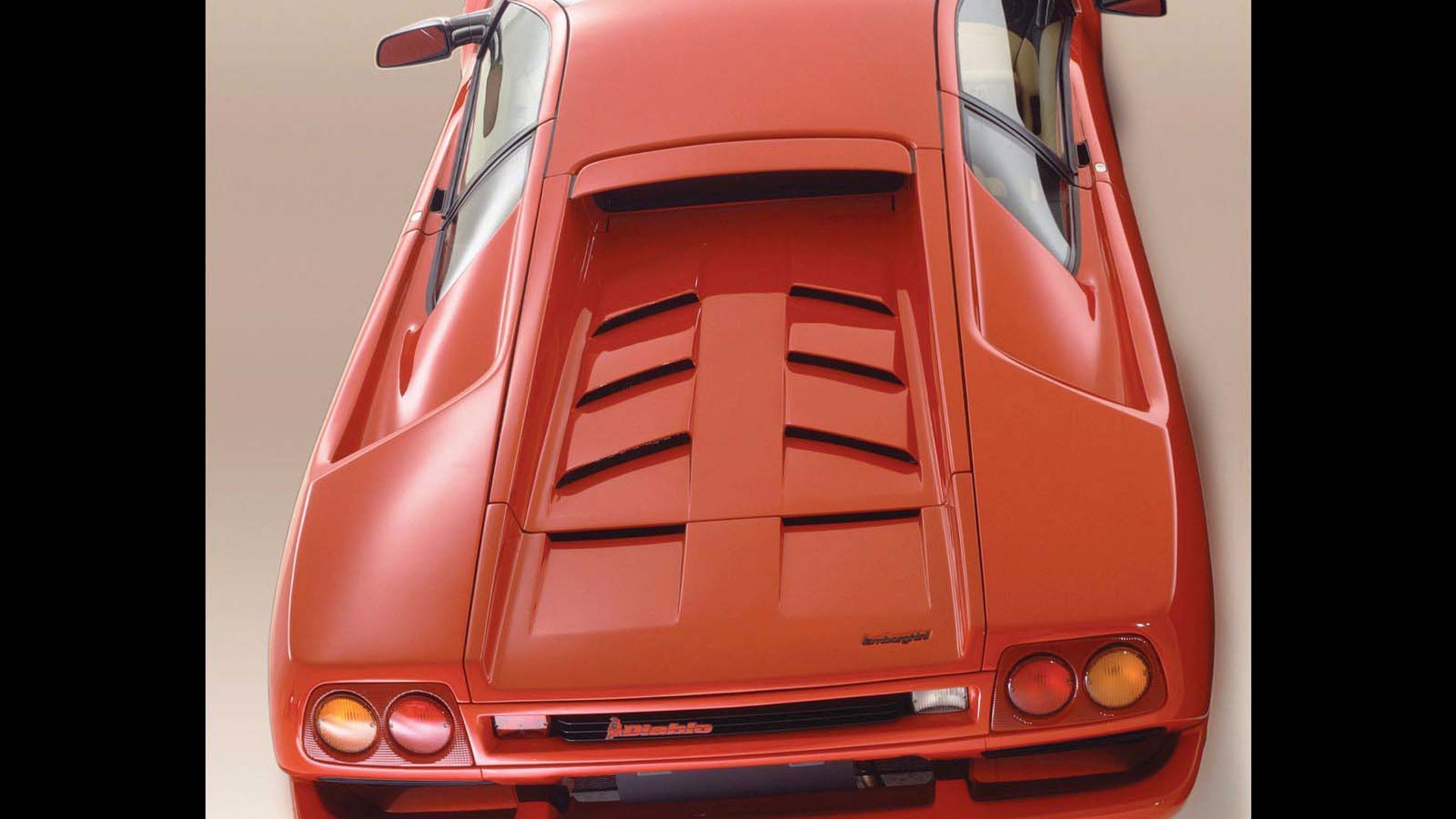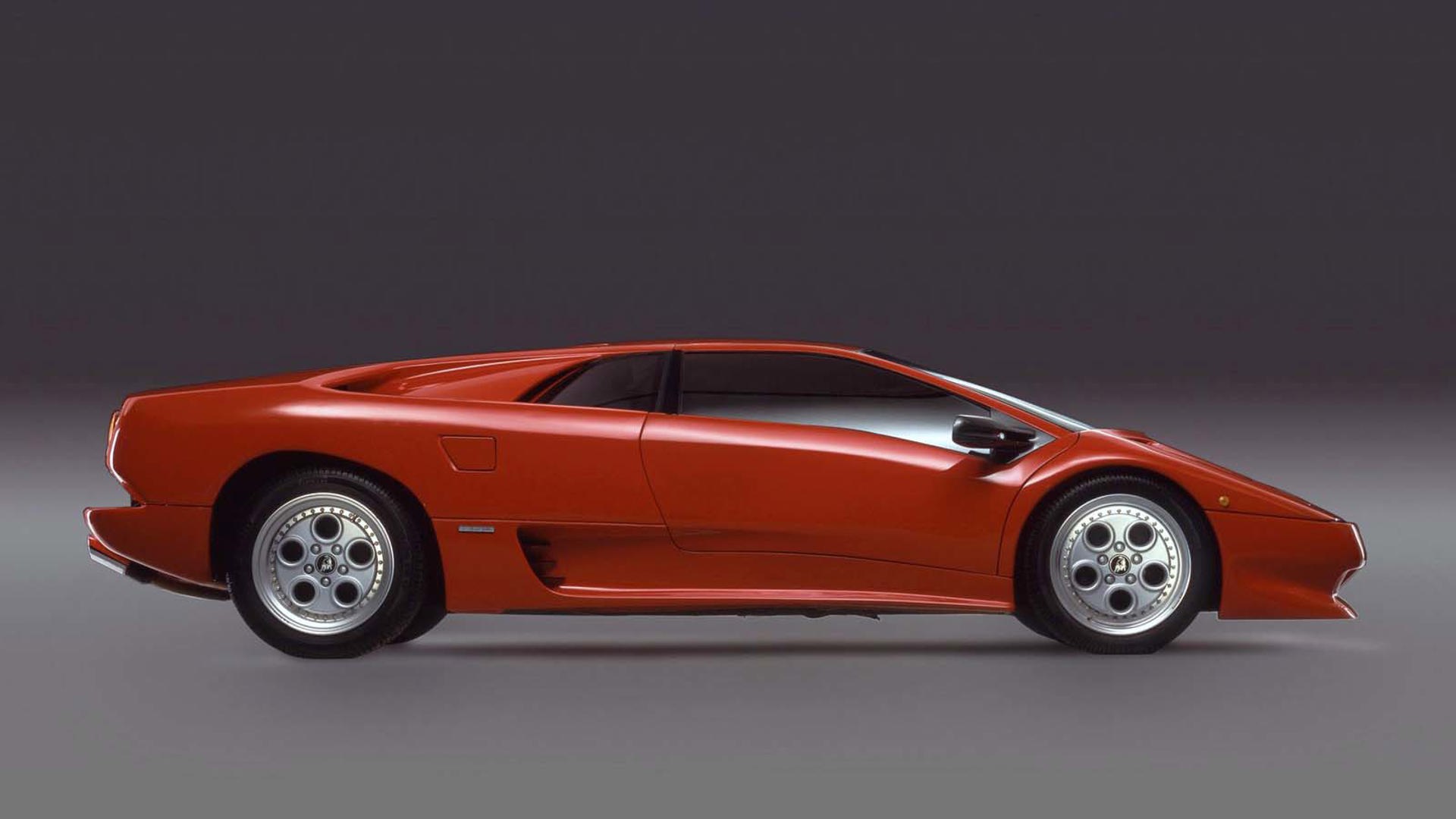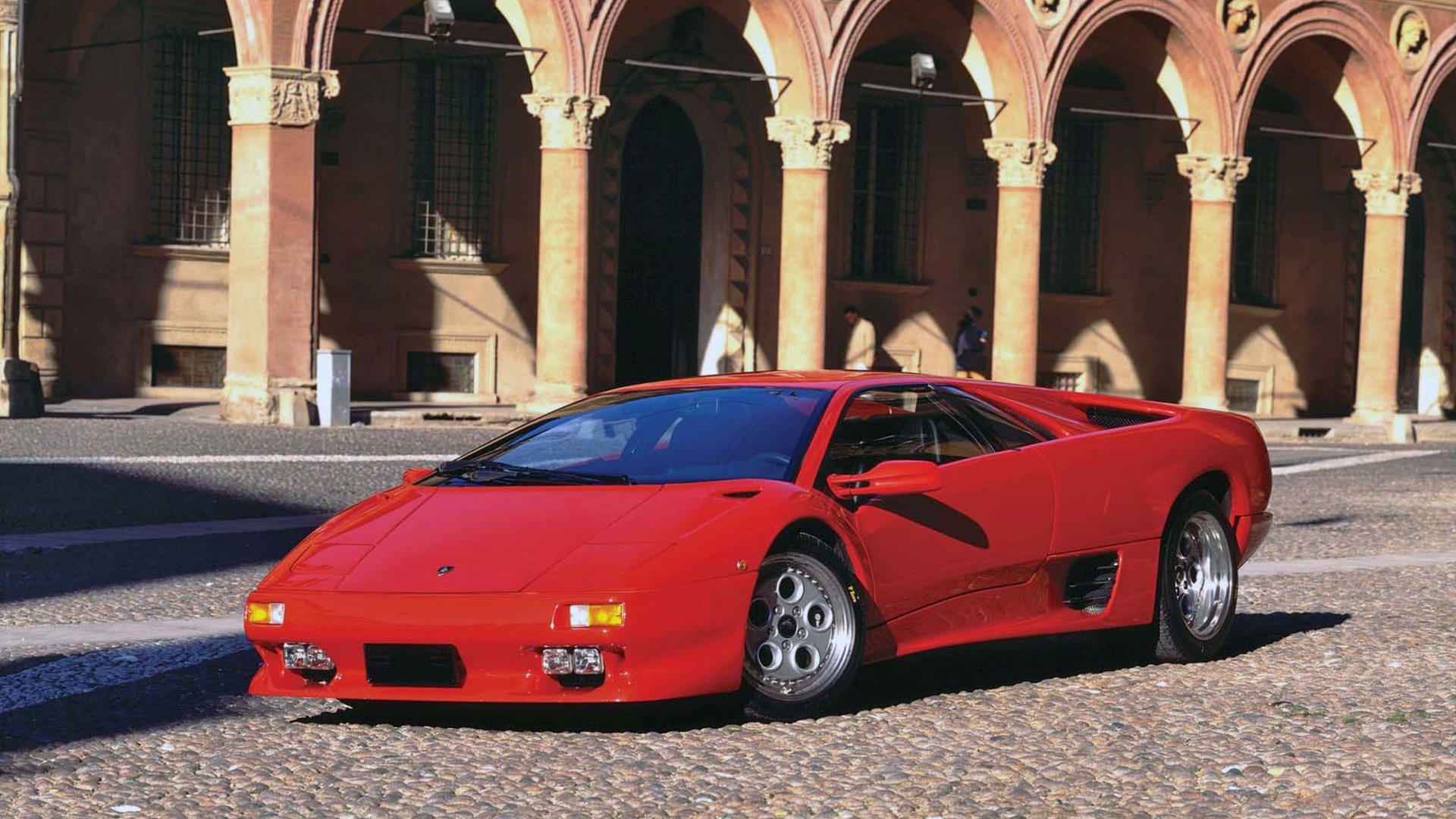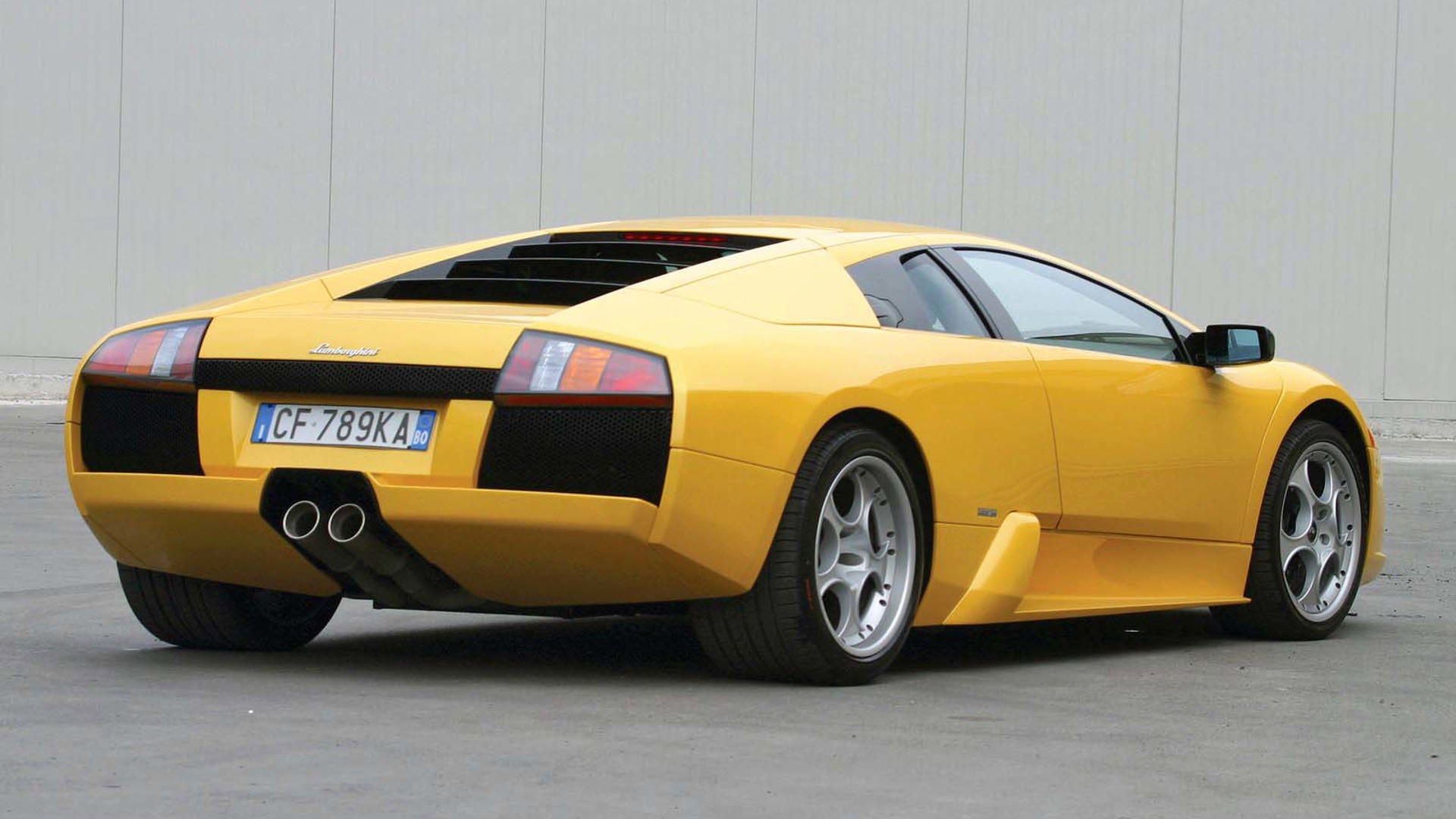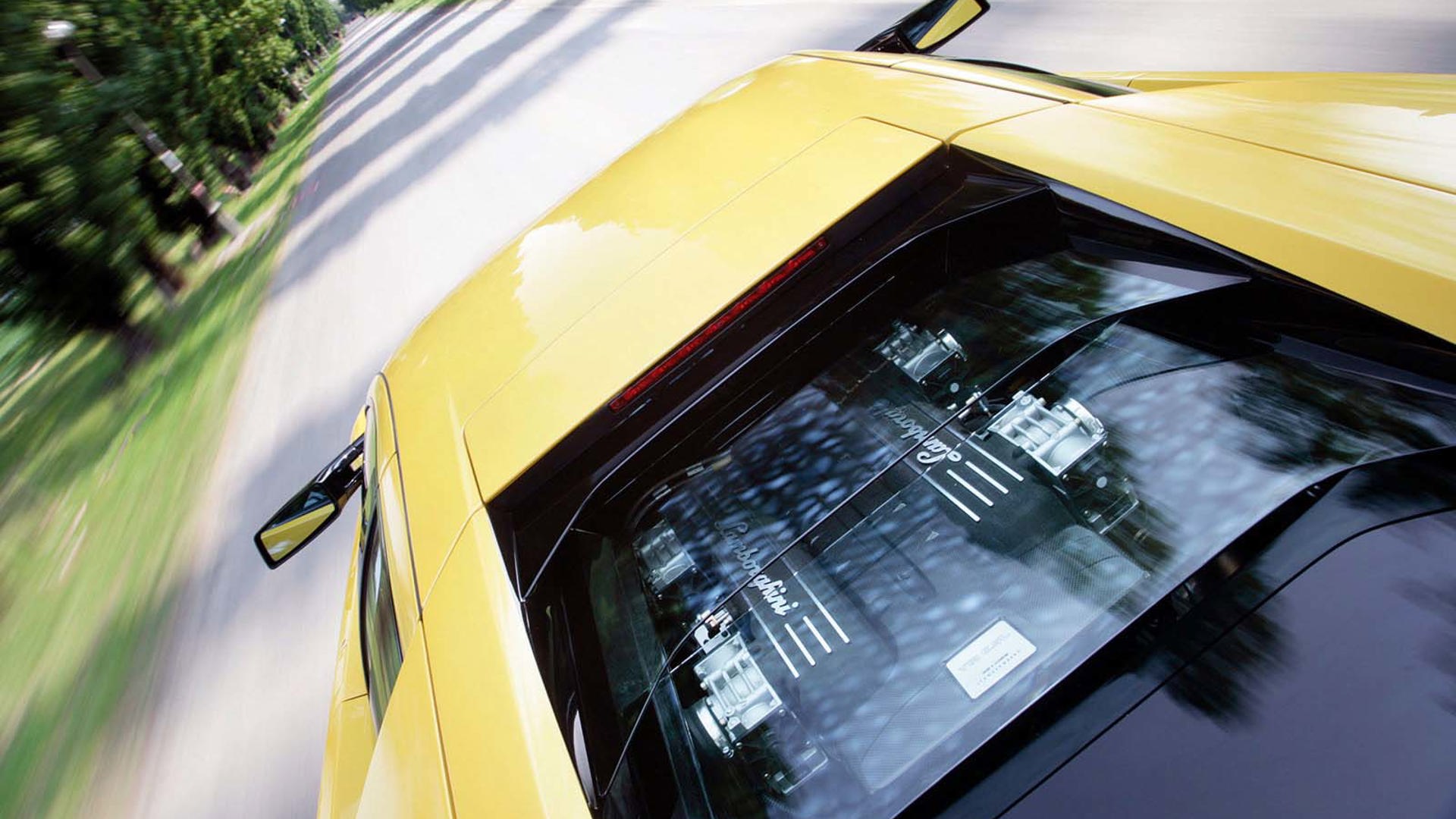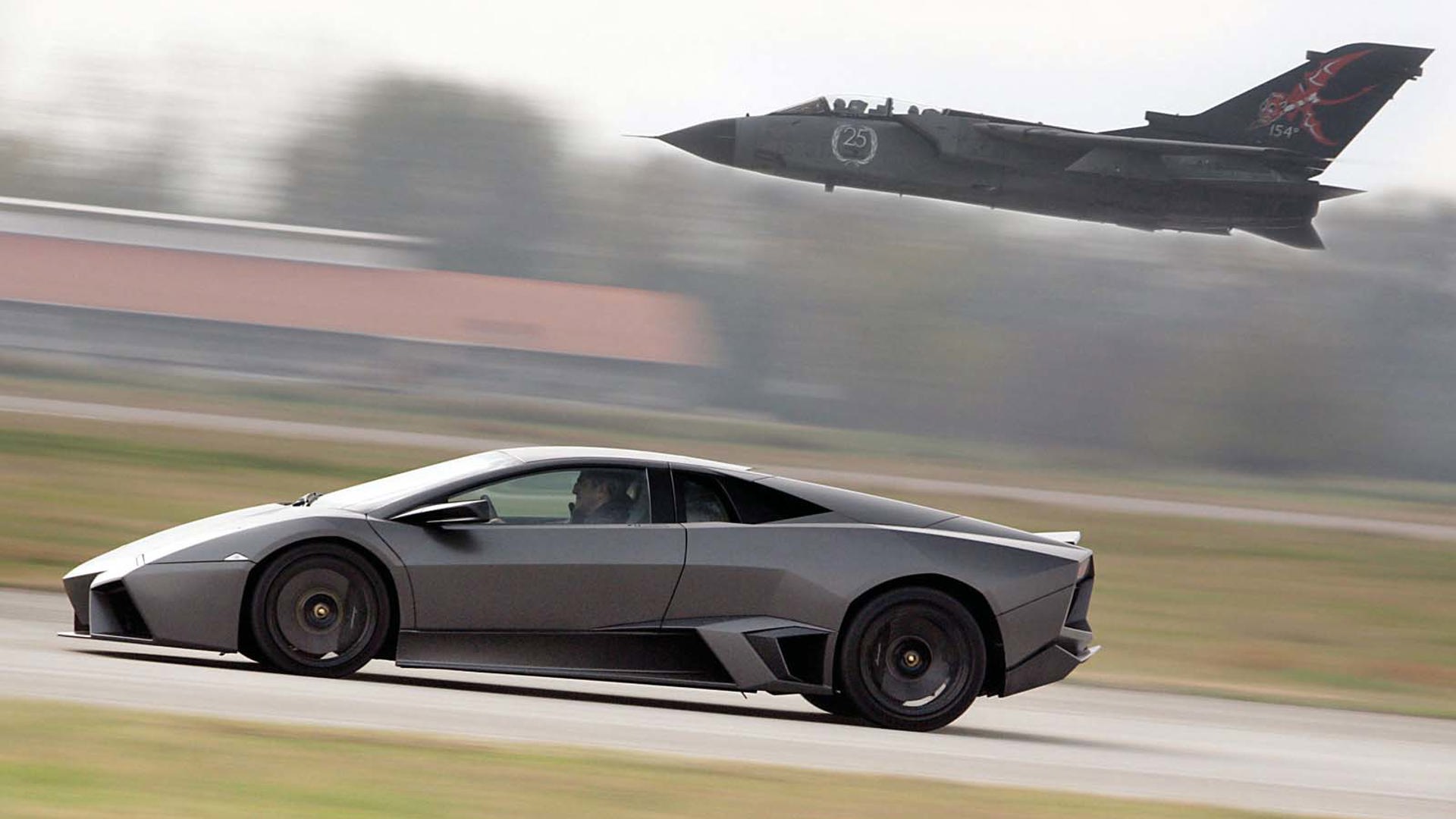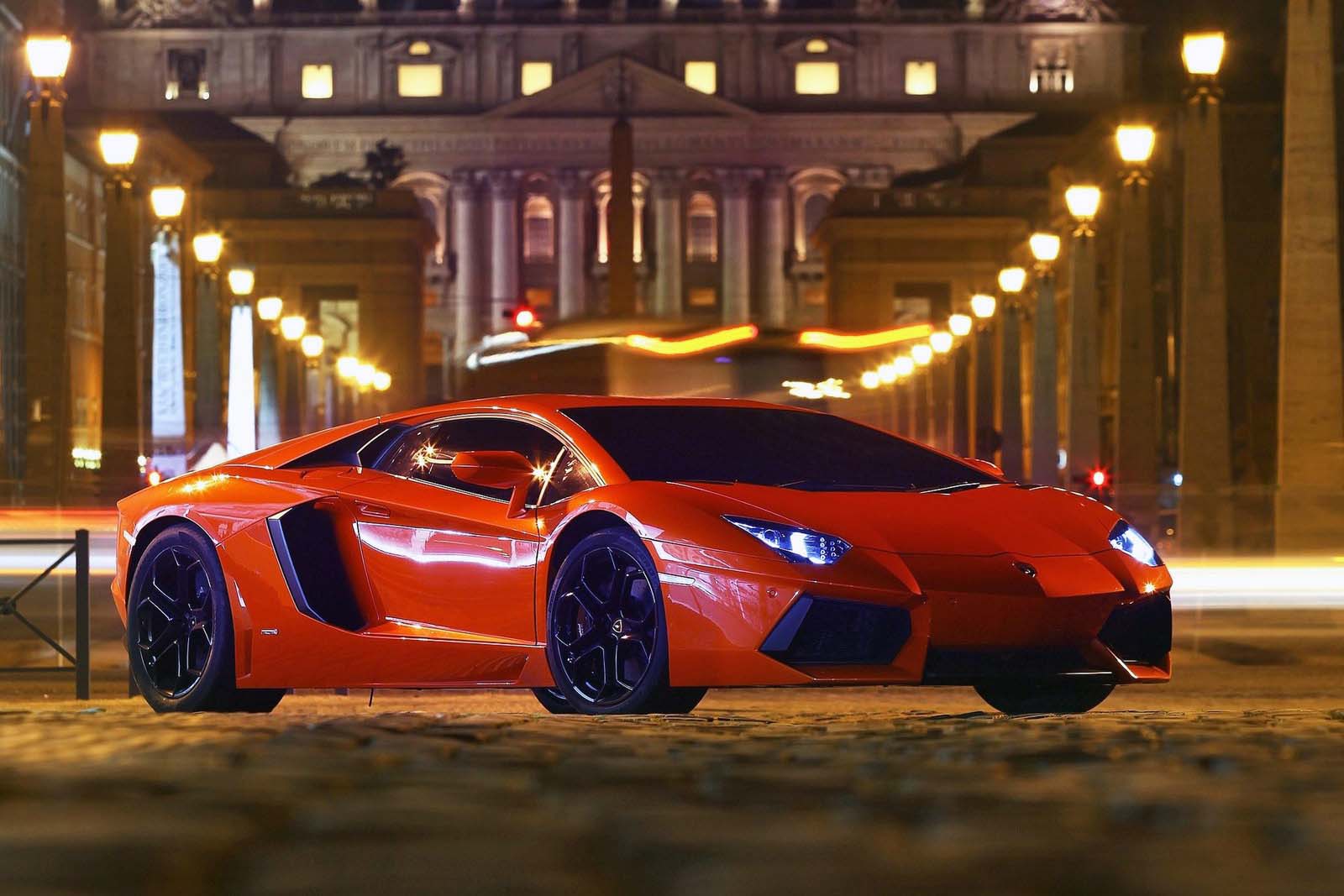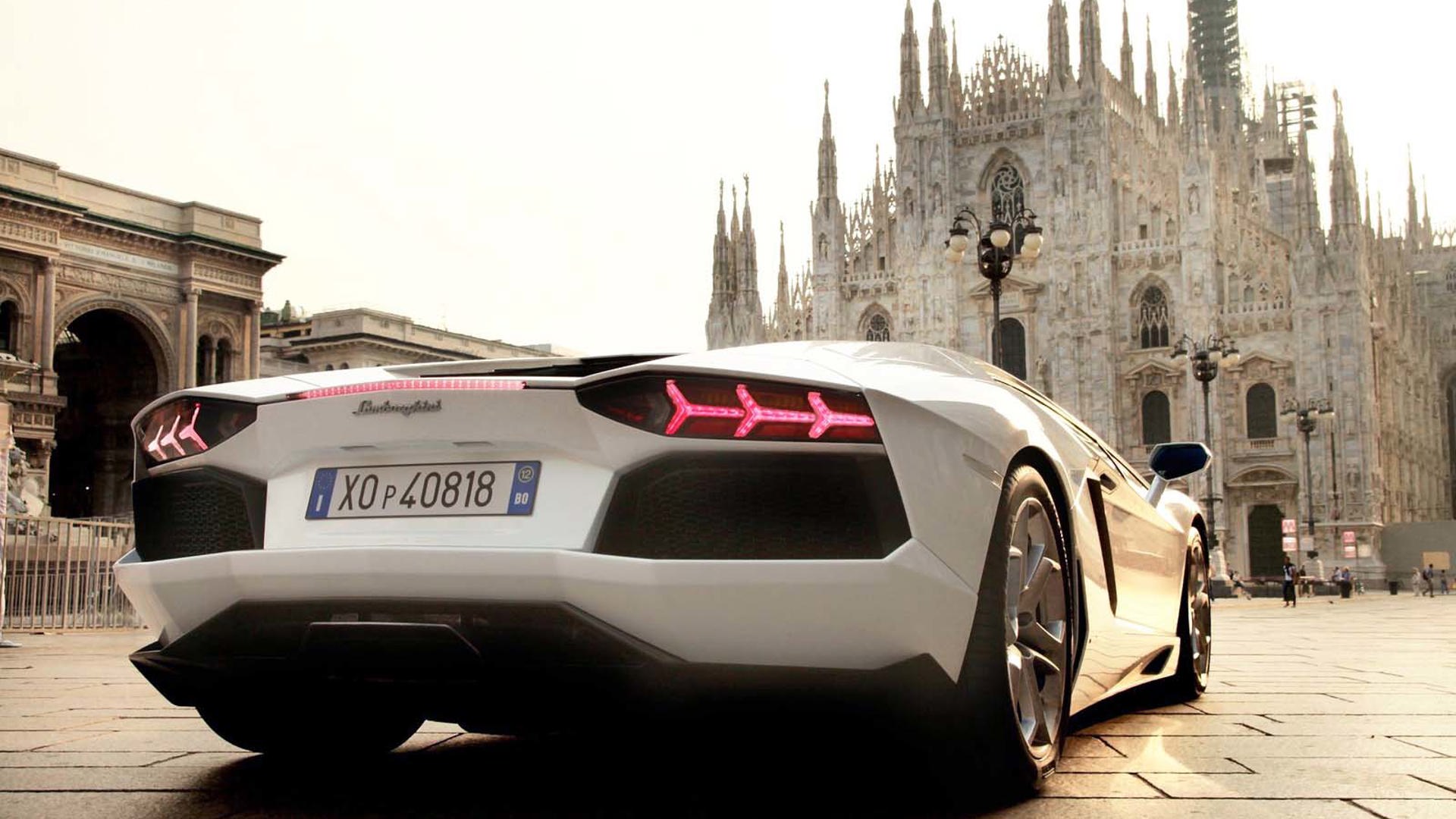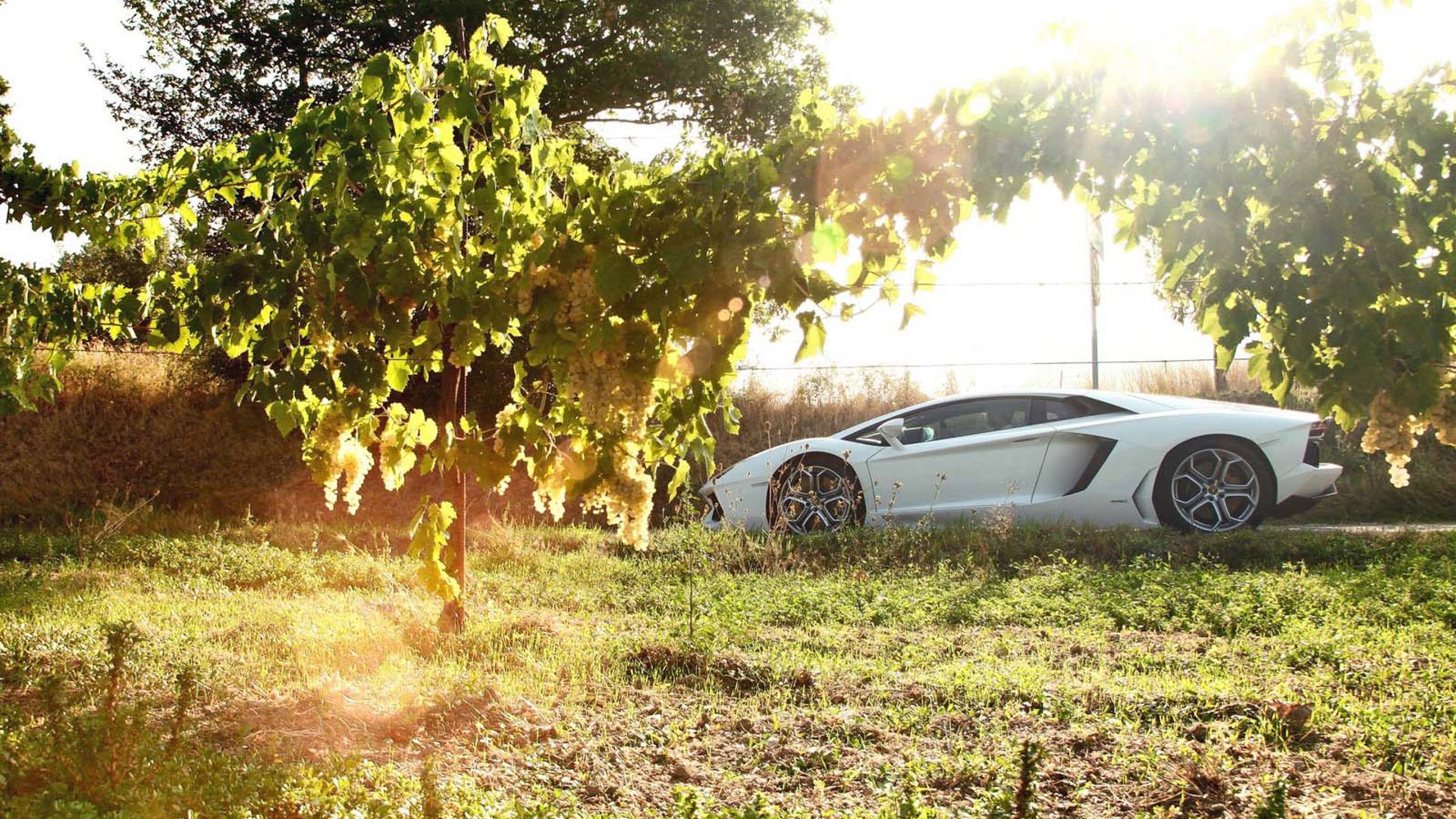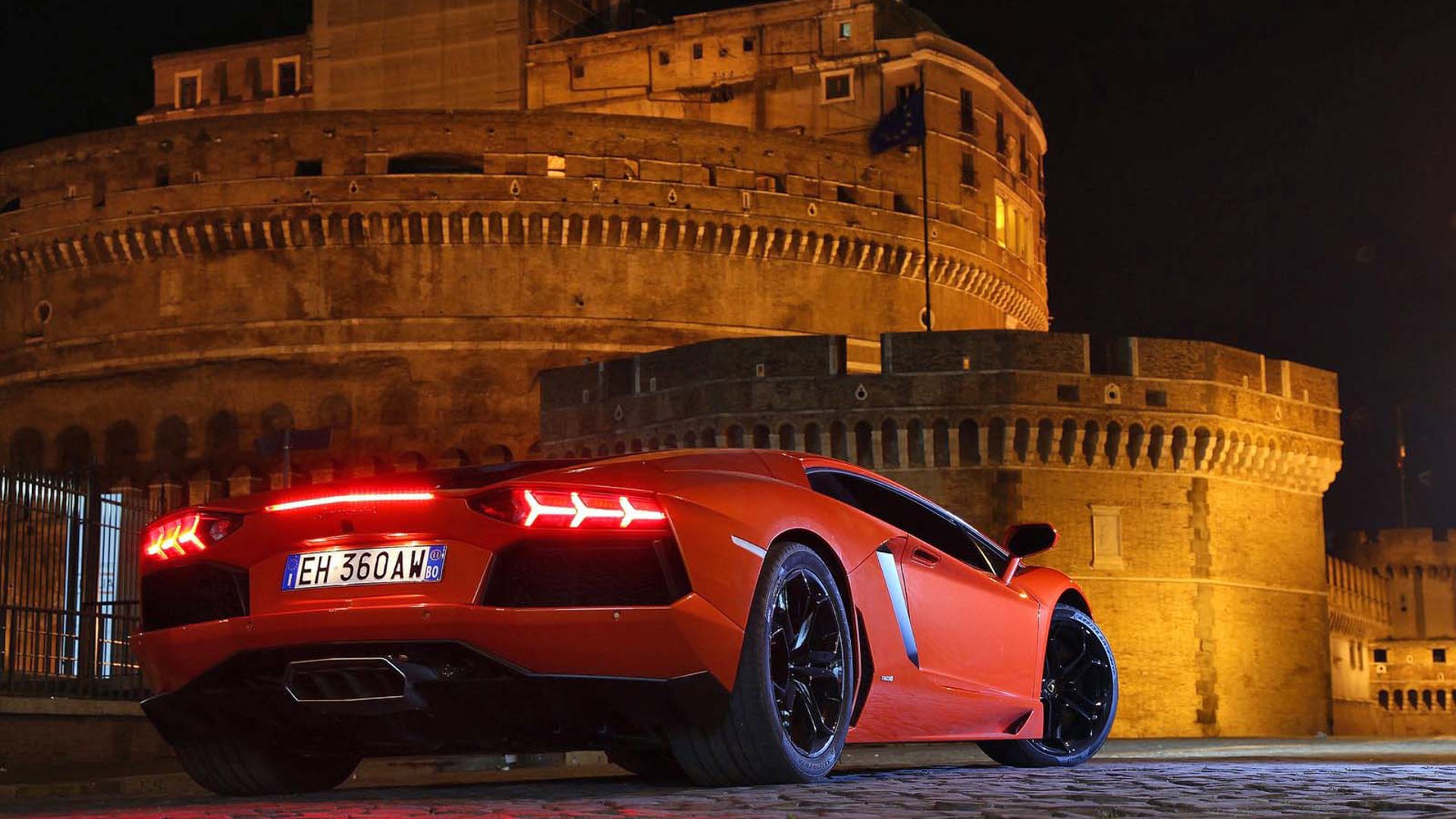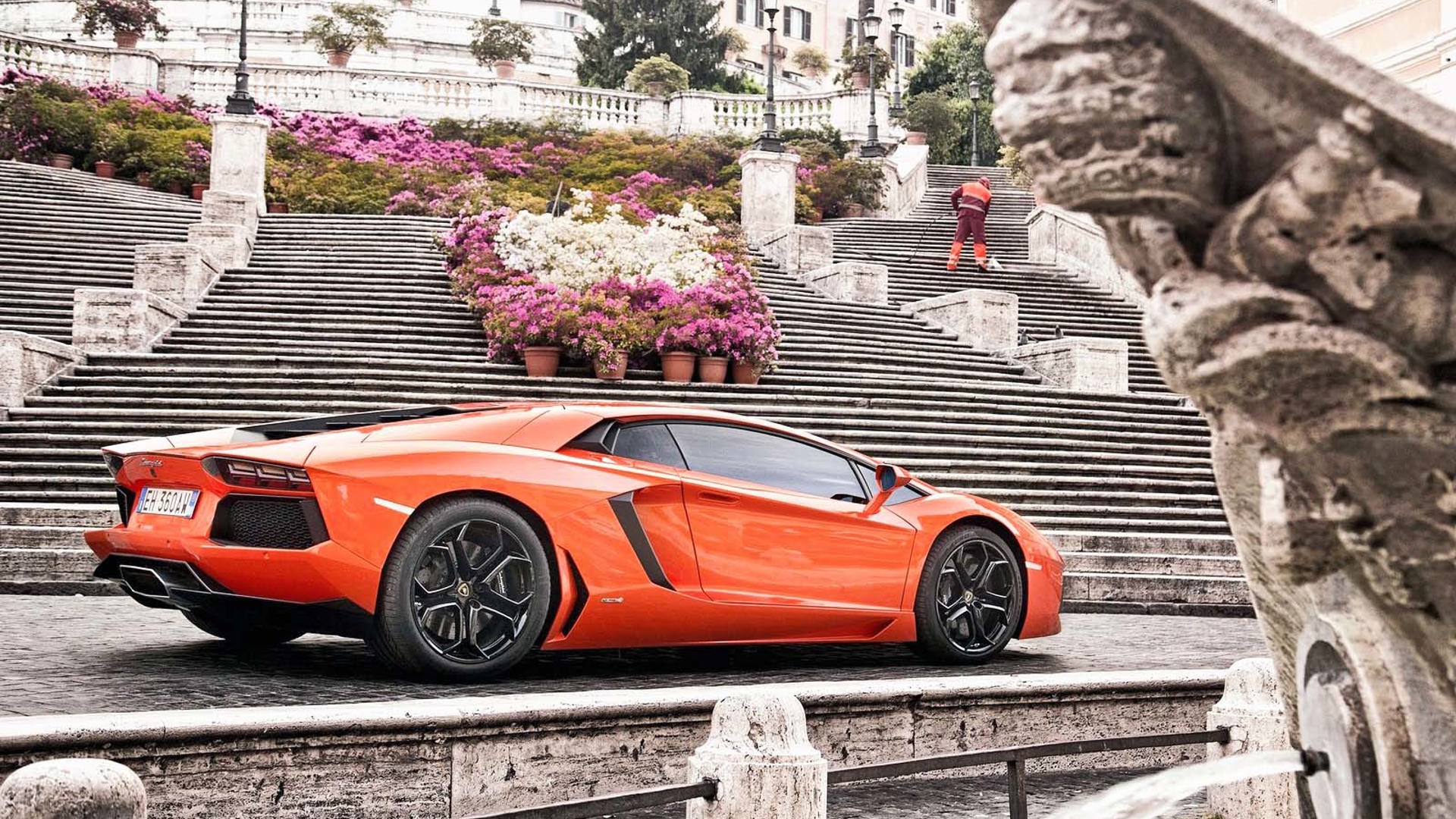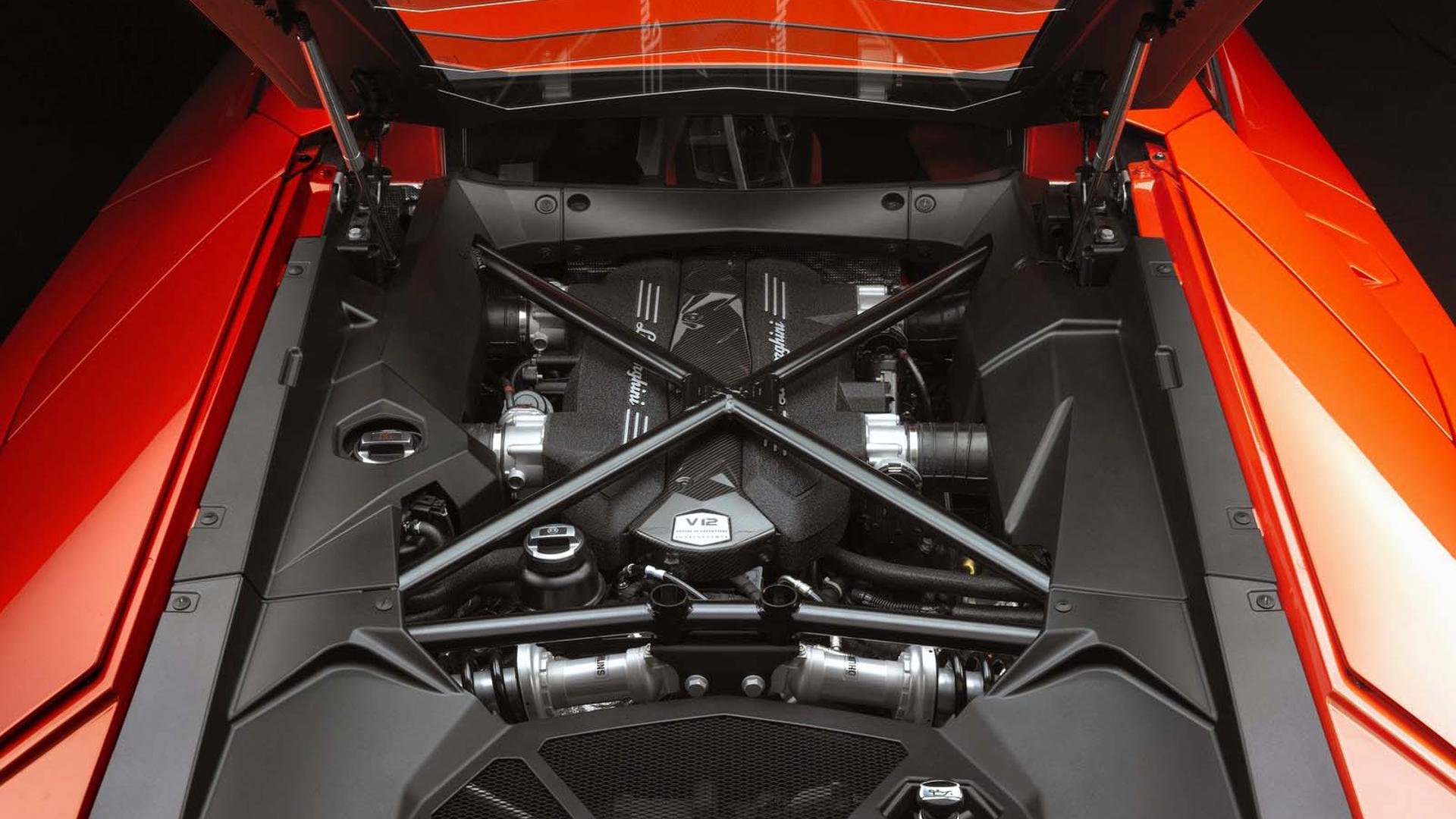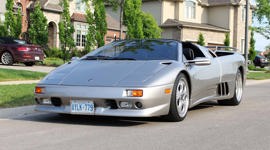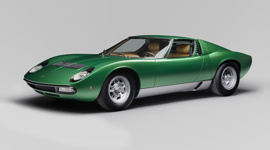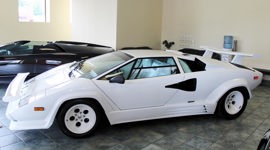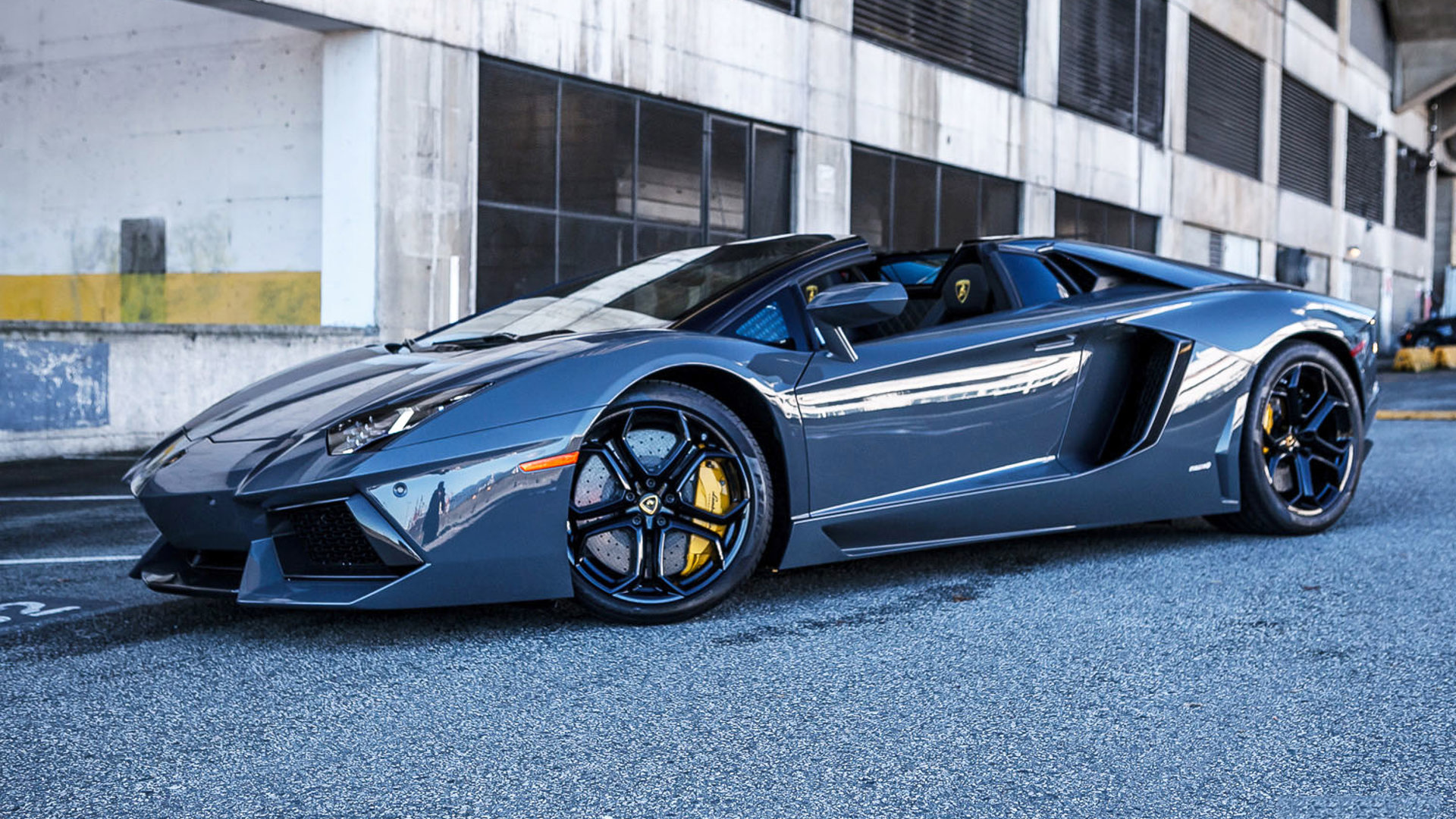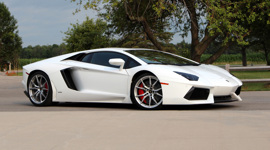When Ferruccio Lamborghini first saw the engine that was to power his cars, he was furious. Engineering genius Giotto Bizzarrini, the man who shaped the Ferrari 250 GTO, had been given the task of creating a twelve-cylinder engine to rival Ferrari, but one built for the road. Clearly, this 3.5L 60-degree V-12 was a racing engine – its 11,000-rpm redline gave the game away immediately.
However, while Lamborghini's edict against racing would last at least as long as he had direct control of the company, the thoroughbred performance of Bizzarrini's original prototype would never be bred out of Sant'Agata's herd of prize bulls. They would always be a little ornery, a little difficult to tame.
Ferruccio, it is said, was furious. But so too were the cars that bore his name.
Prologue: 1964-1966 Lamborghini 350GT

After Bizzarrini left to found his own car company, Lamborghini drafted in another genius engineer: Gian Paolo Dallara. Dallara essentially tamed Bizzarrini's prototype, both engine and chassis. The V12 was detuned from its near-400-hp output to a respectable-for-the-time 270 hp or so, and with the reduced power came much greater reliability.
The 350GT was most emphatically a Grand Tourer, but it had plenty of go. Top speed was 250 km/h, thanks to the five-speed ZF manual transmission mated to Dallara's reworked V12, and 0–100 km came in under seven seconds. Each V12 also underwent rigorous quality control, including 500 km of hard testing by test driver Bob Wallace. Compared to the more frenetic and perhaps fragile Ferraris, Lamborghini's first car had an identity all its own.
Genesis: 1966-1973 Lamborghini P400 Miura
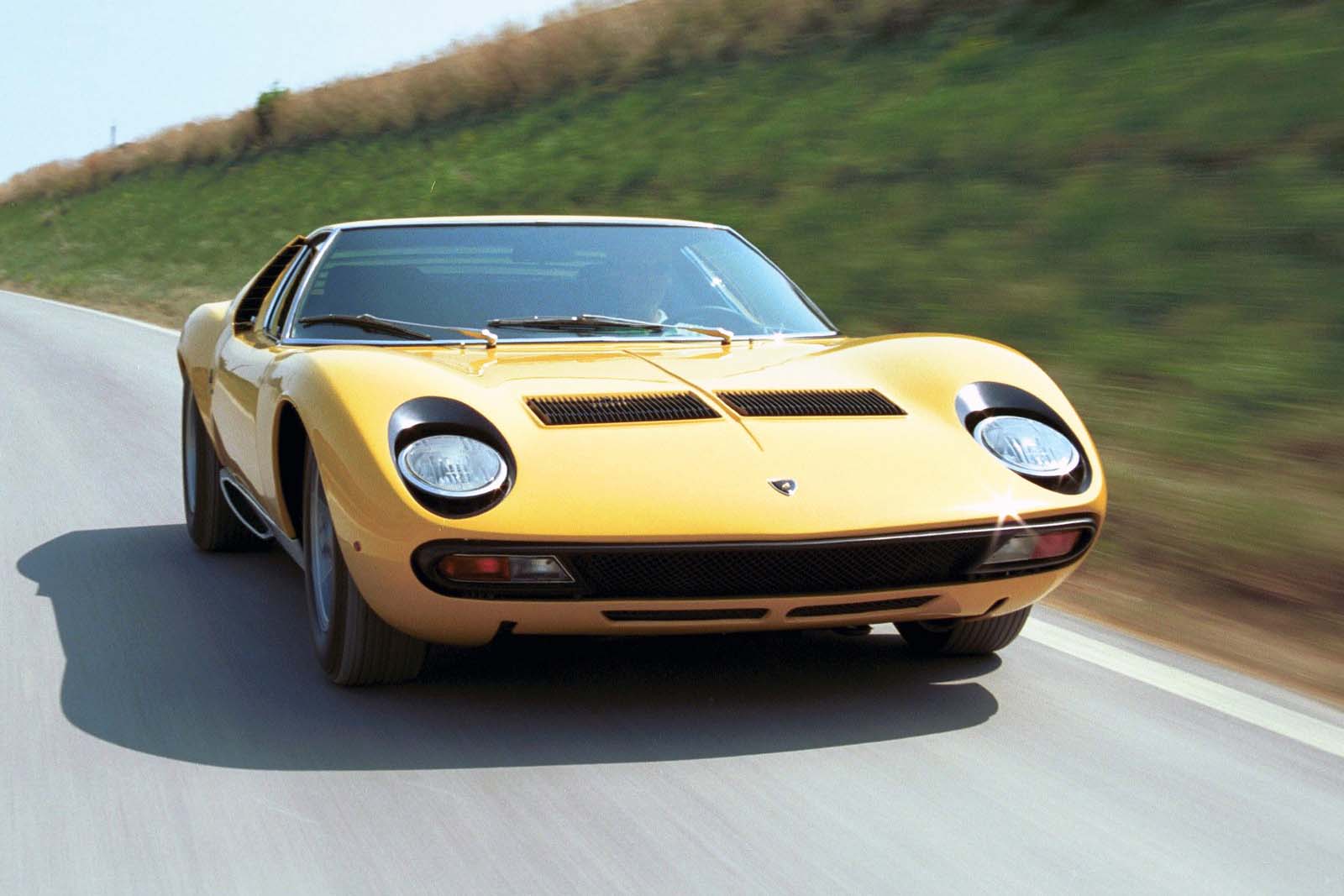
In late May 1965, Lamborghini test driver Bob Wallace climbed into a prototype version of a car unlike anything the world had ever seen, threw his duffel bag into the passenger's seat, and went Hell-for-leather in the direction of Monaco at speeds that can best be described as extra-legal (even for Italy). The car was the Miura, at once the most beautiful car in the world and perhaps the most thrilling. The V12 in the 350GT had been upsized to four litres (with a change in name to 400GT), and it now found itself mounted transversely, oh-so-close to the driver's head.
Again, this wasn't the sort of car Ferruccio said he wanted to produce. The Miura was low-slung, vicious, tricky to drive. It was a racing machine let loose on the street, and a slightly ill-tamed one at that. The racing carburetors had a tendency to fill with fuel when stopped, and then catch fire. As the front-mounted fuel tank emptied, handling got trickier. Also, as you might expect, a front-mounted fuel tank isn't the safest thing in the world.
However, this car dreamed up in their off hours by Dallara, Wallace and another engineer named Paolo Stanzani, would set the world ablaze. Fifty years ago, it marked the beginning of the supercar revolution, circling the Alps at the beginning of The Italian Job, and firing our imaginations.
Profanity on wheels: 1973-1990 Lamborghini LP400/500 Countach

It's one of the oldest automotive legends out there: Nuccio Bertone walks into the workshop to see what young designer Marcello Gandini has crafted as a replacement for the Miura. His response at seeing the sheets come off is “Countach!” It's a Piedmontese expression whose meaning is perhaps best left out in polite company – the first car named after a swear word.
How true is the story? It hardly matters, it's just that good. Additionally, the Countach could hardly have a better name. Much less comfortable than the Miura thanks to the space eaten up by the now longitudinally mounted V12, the LP400 Countach is a bit of a bear to drive, difficult to see out of, and very, very fast.
There's also an unexpected Canadian connection. During the 1970s, Lamborghini is struggling against the weight of debt and the ups and downs of the supercar market; they're no volume player. In steps Canadian Formula One team owner and oil magnate Walter Wolf, a longtime Lamborghini fan. He commissions a series of prototype cars that will lead the way forward for the Countach, privately keeping Lamborghini afloat. These are the rarest of the rare, personally built and tuned by Dallara, and fitted with race-spec parts lifted from Wolf's Formula One racing efforts. The last made is a 5.0L V12, 500 hp monster with a 7:1 steering ratio, modified suspension, and racing brakes. The car still exists in Japan, complete with maple leaf insignias on its pop up headlights.
Sympathy for the Devil: 1990-2001 Lamborghini Diablo
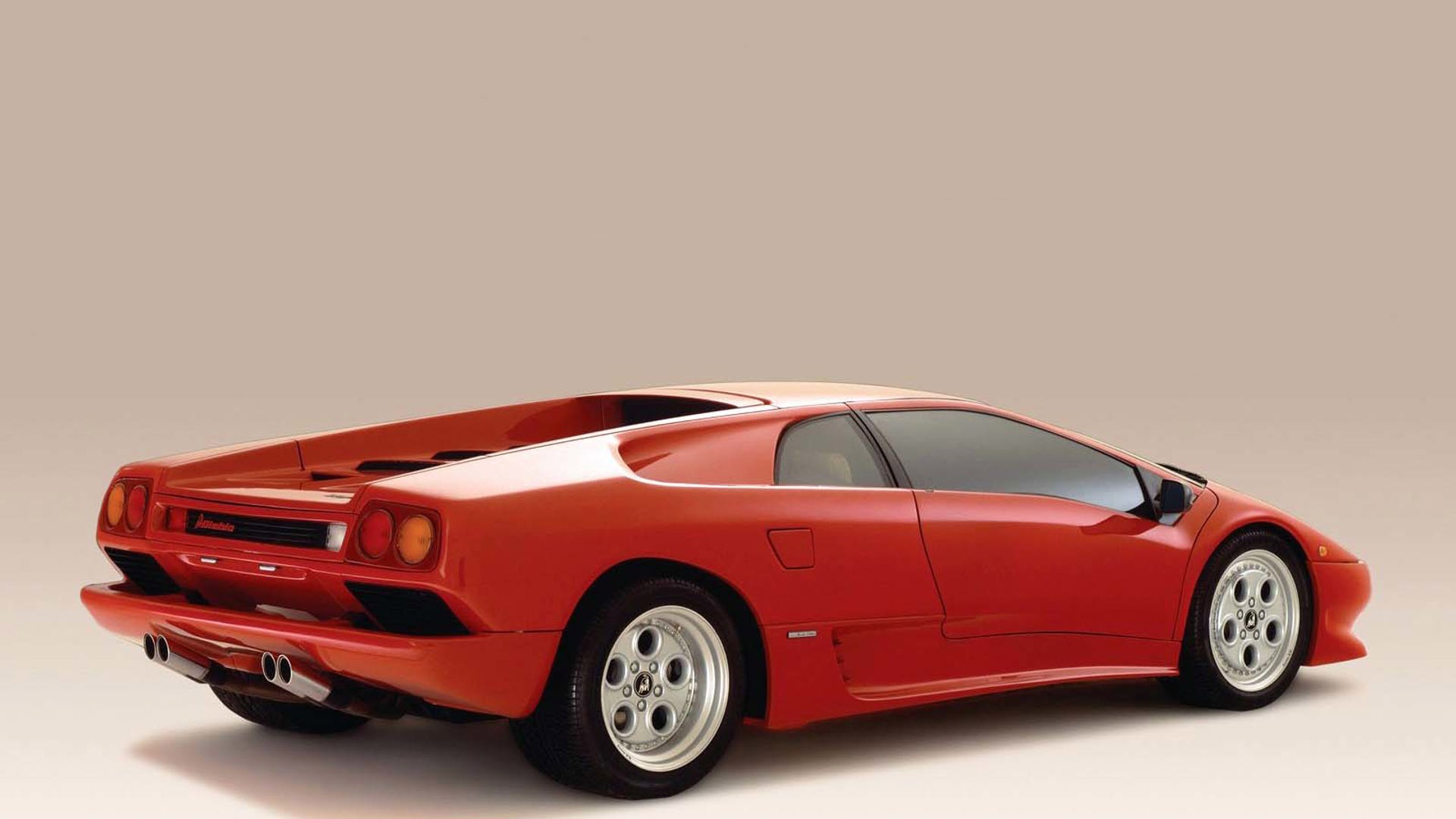
As a replacement for the Countach, the Diablo had a somewhat protracted birth. The project was started in the mid-1980s, with Gandini again charged with the design. Unfortunately, Chrysler bought Lamborghini in 1987, and their executives were nervous about the sharp edged styling Gandini created; essentially, if the Countach was a swearword, Chrysler wanted to bleep it out.
Their reworked version was considerably smoothed out, yet the potency was still there beneath the skin. Powered by a 5.7L version of Lamborghini's V12, power was now just a hair below 500, and the top speed was now above 320 km/h (200 mph). The Diablo was the first Lamborghini to break this speed barrier, and the publicity was enormous.
At first rear-drive only, the Diablo was soon modified with the introduction of the VT; the acronym stood for viscous traction, and thanks to a new centre differential, that V12 could now send as much as 25 percent of its power to the front wheels. While this changed the character of the Diablo, taming it further, it would establish a blueprint for nearly all road-going V12 Lamborghinis that followed. Still, the most sporting version of the Diablo remained the SV – for Super Veloce – and it would be rear-drive only.
Stealth Fighter: 2001-2010 Lamborghini Murcielago
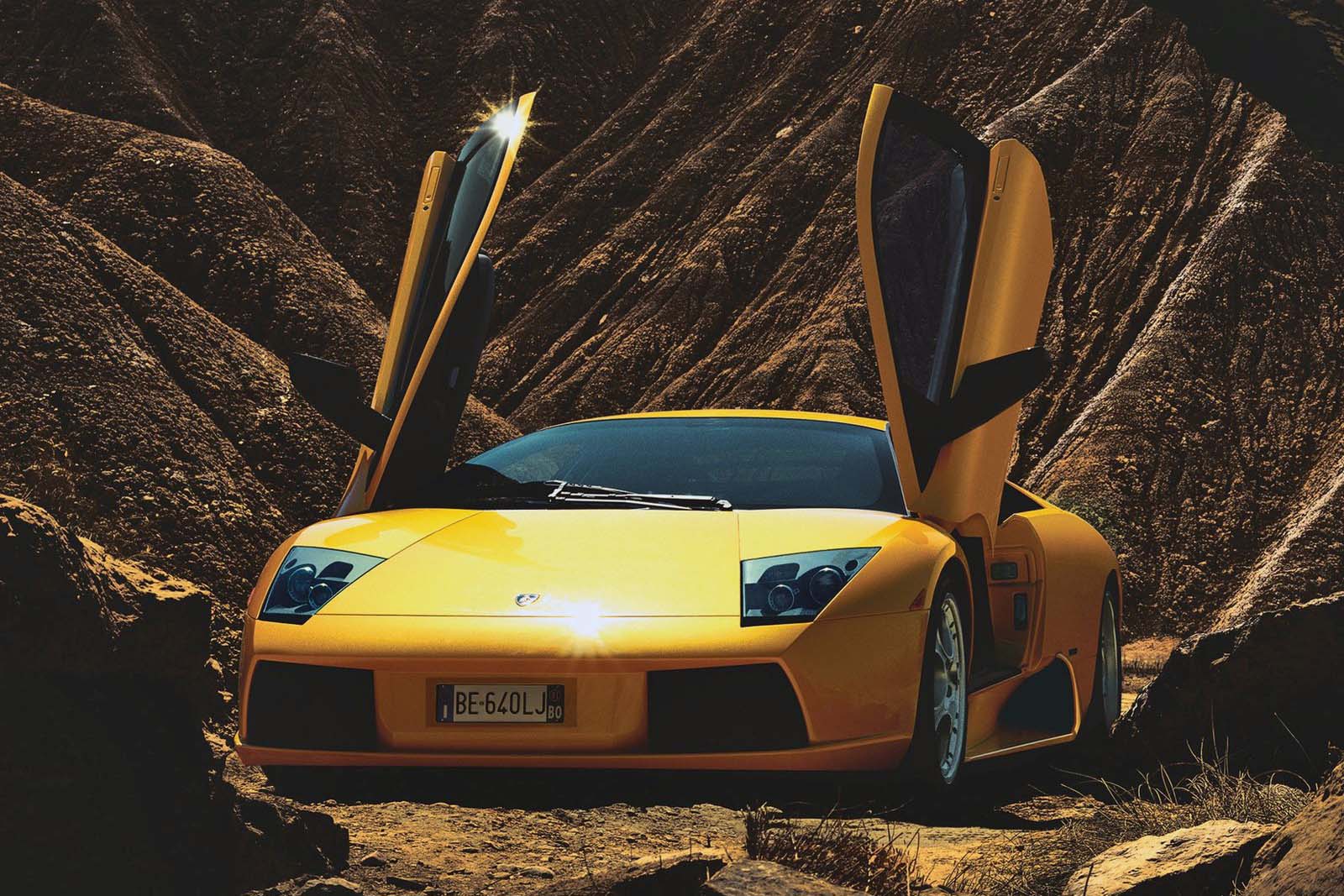
Soon enough, the Chrysler era at Lamborghini ended and Audi stepped in. Lamborghini fans weren't thrilled at first; you might as well try pairing a delicate Chianti with a giant lump of bratwurst. However, while Audi's influence on Lamborghini would certainly change the brand's direction, a little German engineering turned out to be a very good thing.
Arriving as the handiwork of Belgian designer Luc Donckerwolke, the Murcielago replaced the Diablo's smoothed-out appearance with the multi-angle trapezoids of an F-117 stealth fighter. Like most Lamborghinis, it took its name from a famous Spanish fighting bull, one that formed the bloodline of the bulls coming from Don Miura's ranch in Seville. The nod to Lamborghini's heritage was obvious.
The Murcielago acted as a sort of bridge between Lamborghini's roots, first available with a 6.2L V12 that traced its architecture to Bizzarrini's original masterpiece. It produced a healthy 572 hp, and was later supplanted by a 6.5L V12 making first 631 hp and later 661 hp.
There were several even more extreme versions of the Murcielago, including some race-spec variants that likely would have displeased Ferruccio. However, he'd have probably loved the Reventon, an ultra-rare (just 21 made) carbon-fibre creation based on the Murci's underpinnings. If the Murcielago was an F-117A, then this was an F-22 Raptor, the highest tech fighting machine Lamborghini could field.
Power in Numbers: 2011-current Lamborghini LP 700-4 Aventador
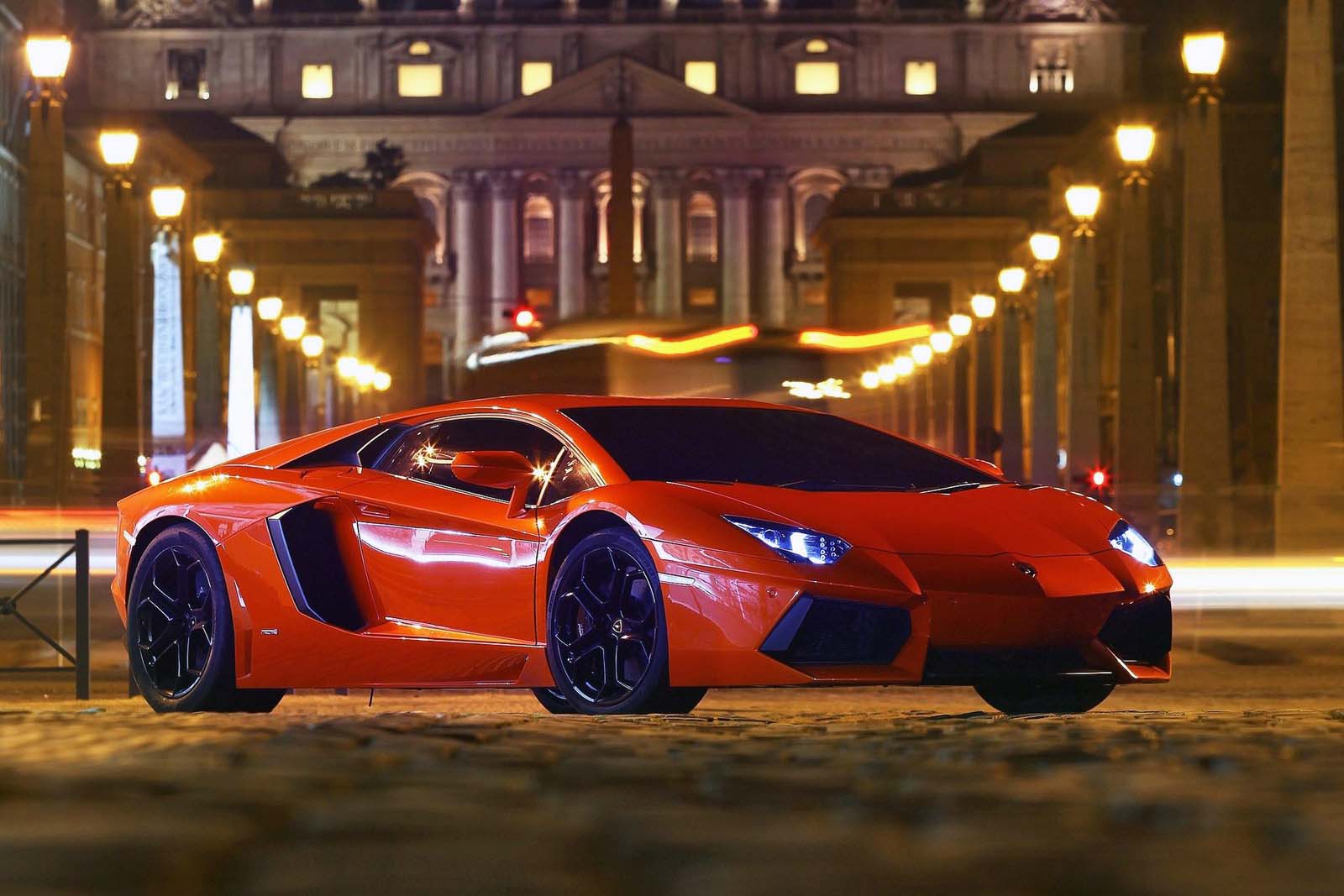
Building on the styling lessons learned with the Reventon, Lamborghini took extreme dimensions into the mass market with the Aventador. It might seem odd to be speaking of mass production with such a theoretically rare car, but the numbers tell the tale: under 800 Miuras were ever made, and it took almost twenty years to sell 2,000 Countaches; the Aventador is well on its way to 4,000 cars sold.
Powering the latest machine is an all-new V12, a break with tradition for the first time. Still, with 690 hp from 6.5L and no hybrid or turbocharging nonsense, it's at least the same sort of animal. Top speed is above 350 km/h, with a 0-100 km/h time of under 3 seconds.
Like the Diablo before it, the Aventador gets an SV variant, but retains its all-wheel drive. Currently, this is the most extreme V12 Lamborghini you can buy, with power bumped up to 750 hp and wild new aerodynamics. Its heartbeat may be slightly different than that of its ancestors, but that same twelve-cylinder fury still pulses in its veins.
